36 Thriving Deer-Resistant Plants for Peace of Mind in Your Garden
Have you ever walked out to admire your garden, only to find that the deer beat you to it? You’re not alone, and you’re definitely not out of options. I’ve rounded up 36 beautiful, deer-resistant plants that not only add color and texture to your garden but are also far less tempting to your four-legged visitors.
From vibrant coneflowers to the soothing scent of lavender, these plants are known for being much lower on the deer’s list of favorite snacks.
Now, let’s be honest—no plant is totally deer-proof. If they’re hungry enough (especially during the lean winter months from October to February), deer will nibble on just about anything.
But the good news? There are plenty of plants they’ll usually pass up in favor of tastier options next door. With the right choices, you can help steer them away from your garden and toward someone else’s salad bar.

As an Amazon affiliate, I earn a commission from qualifying purchases at no additional cost to you. My blog also features other affiliate links for your convenience. Click here to read my privacy policy.
What Is a Deer-Resistant Plant?
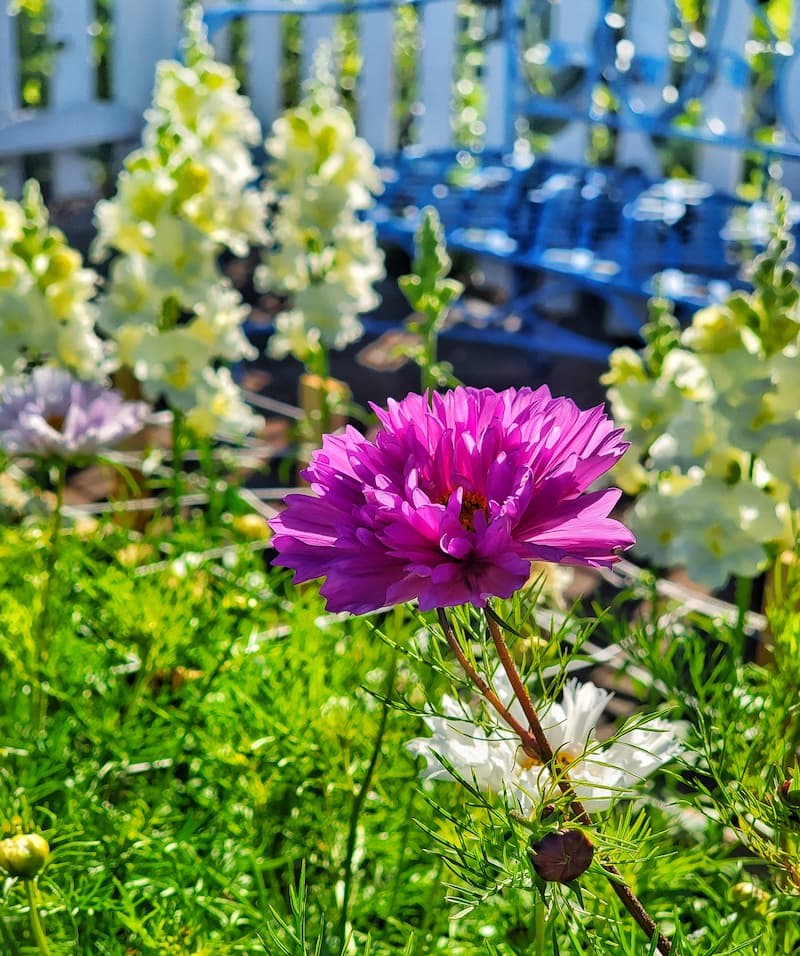
While no plants are completely deer resistant, deer will avoid certain plants that have:
No surprise here—deer usually stay away from poisonous plants. Daffodils, foxgloves, and poppies are just a few blooms they’re smart enough to skip.
Flowers and Plants Deer Love
Knowing which plants deer tend to avoid is super helpful, but it’s just as important to know which ones they love.
Deer are drawn to plants that are soft, nutrient-rich, and easy to chew—basically, anything that feels like a garden buffet.
If you’ve got these in your yard, don’t be surprised if your garden becomes their favorite hangout spot. Here are a few plants and flowers that tend to attract deer the most:
How Do I Keep Deer Out of My Garden Naturally?
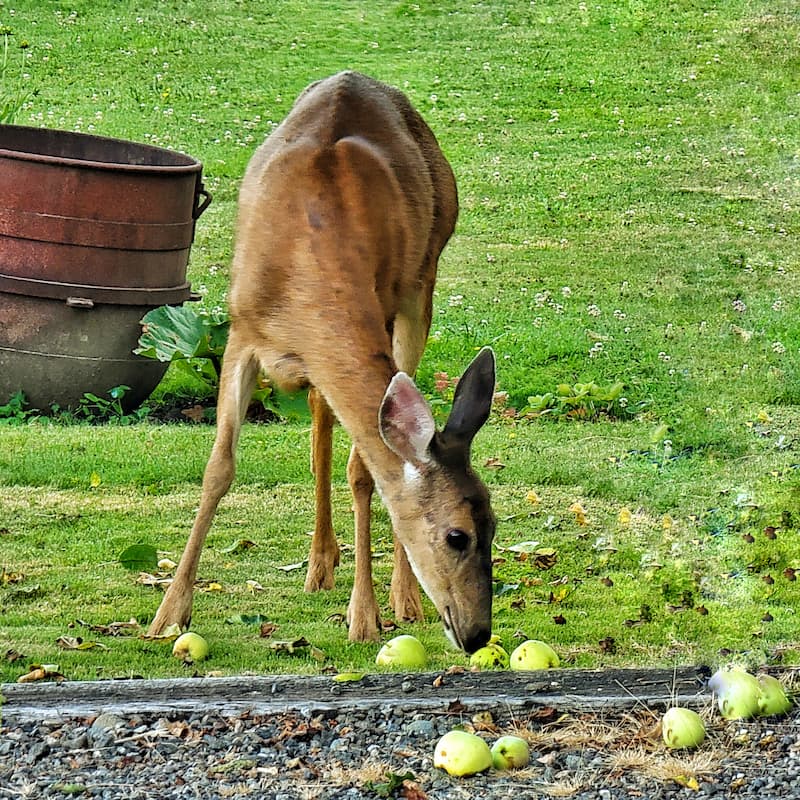
Looking for natural ways to keep deer from turning your garden into their personal salad bar? Here are a few tried-and-true methods to help protect your plants without using harsh chemicals or complicated setups.
Plant Deer-Resistant Varieties
One of the easiest ways to deter deer is by filling your garden with plants they don’t like. Deer usually steer clear of flowers with strong scents, fuzzy textures, or bitter flavors. Consider planting lavender, peonies, and foxgloves, which are beautiful and unappetizing to your neighborhood grazers.
Use Natural Deer Repellent
Sprays made from ingredients like garlic, hot peppers, or eggs can help make your garden less appealing to deer. Whether you make your own or buy a ready-to-go formula, the smell and taste will usually send them packing.
I personally use Liquid Fence in my garden. I’ll be honest; it smells awful when I spray it on my roses and other deer magnets, but it really does the trick!
Just remember to reapply, especially after rain, to keep it effective. Most repellents are non-toxic and safe for pets, plants, and the environment.
Install Physical Barriers
If deer are especially persistent in your area, a good fence might be your best bet. A deer-proof fence should be at least 7–8 feet tall or slanted at a 45-degree angle to keep jumpers at bay.
Don’t want to build a full fence? Deer netting is a great alternative for protecting specific flower beds or prized plants without blocking your entire view.
SHOP for deer fence netting.
Garden Supplies and Tools
Check out my favorite garden supplies and tools for the growing season. Whether you’re looking for potting soil or deer repellent, you’ll find what I use in my own garden.
Utilize Scare Tactics
Deer can be skittish, so using motion or noise to startle them is a great way to send them running.
I use a motion-activated sprinkler in my cut flower garden, and it works wonders (plus, it gives me a little laugh when it surprises the occasional squirrel, too).
SHOP for motion-activated sprinklers.
Other ideas? Try motion-activated lights, wind spinners, or even hang up old CDs or wind chimes that move and make noise in the breeze. Just remember to switch things up occasionally. Deer are smart, and once they realize a scare tactic is all bark and no bite, they’ll start ignoring it.
These options are non-invasive, harmless, and give your garden an extra layer of protection.
Create an Unfriendly Terrain
Deer prefer smooth, easy walking paths. They’re less likely to stick around if the ground feels awkward or unstable.
Try using sharp gravel or other uneven surfaces around your most vulnerable plants to make your garden a little less inviting for their hooves.
Companion Planting
Another clever way to keep deer at bay is by mixing plants they dislike alongside the ones they love.
Surround your tastier plants with strong-scented or textured varieties like lavender, marigolds, and sage. These work as natural deterrents and still keep your garden looking beautiful and full.
Deer Resistant Plants and Flowers
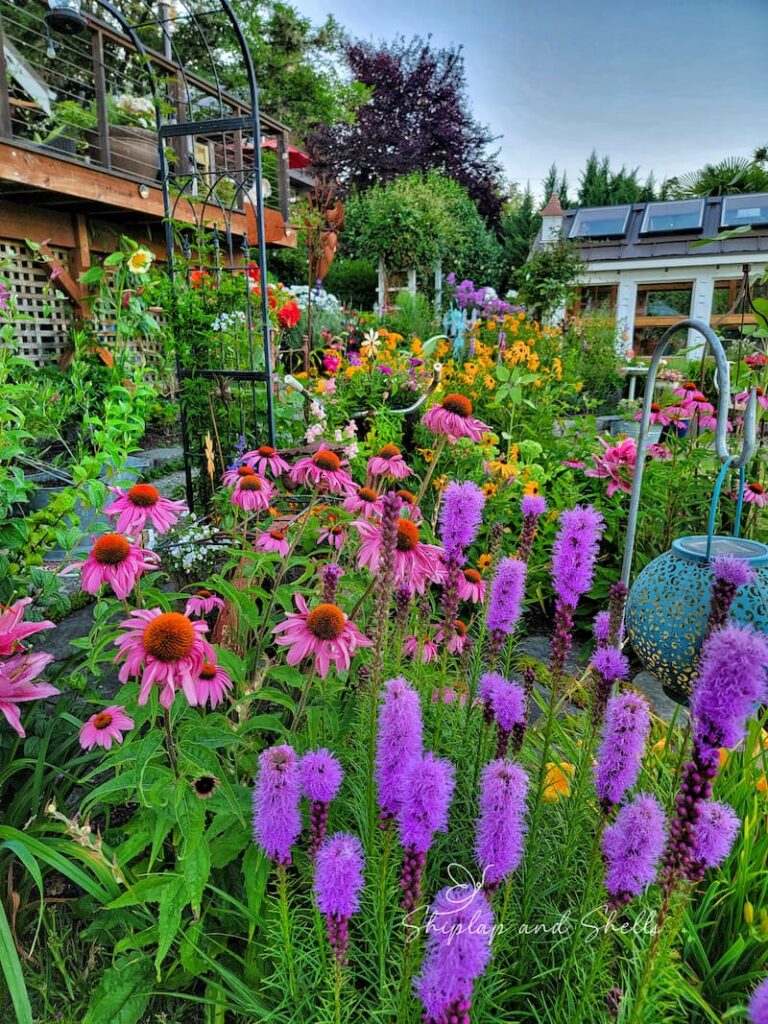
The easiest way to keep deer out of your garden? Grow plants that they just don’t want to eat.
Below, I’m sharing some of my go-to deer-resistant flowers and plants, all favorites from my own garden. They’re beautiful, easy to grow, and (best of all) not very appealing to deer.
1. Black-Eyed Susans
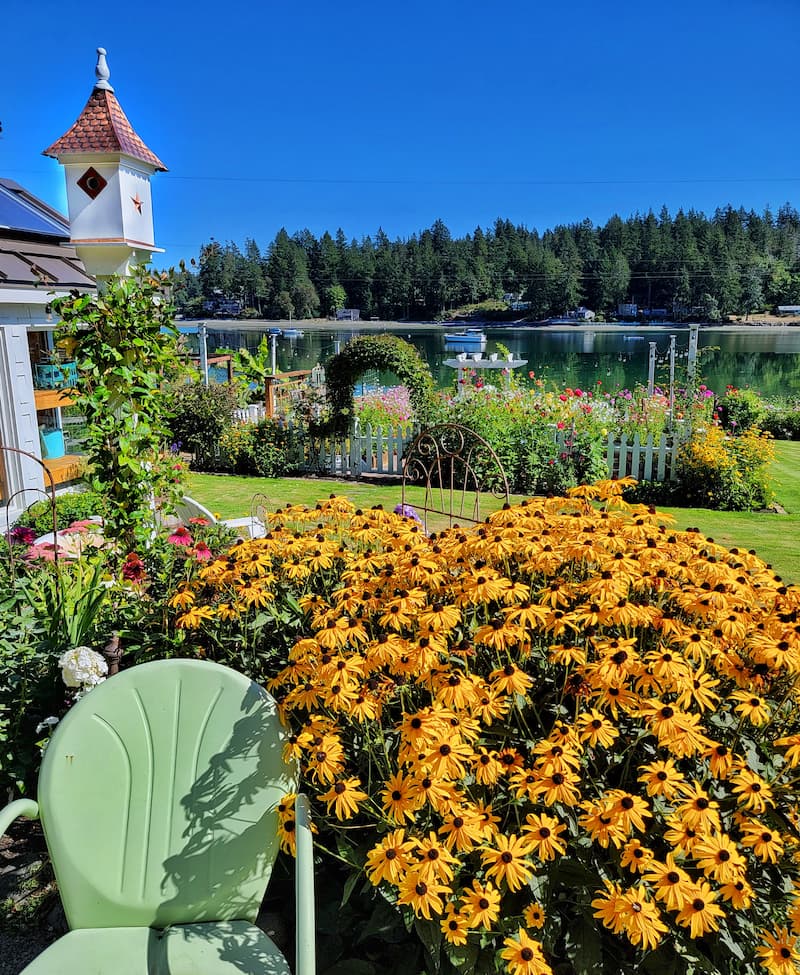
These cheerful golden blooms are more than just a pretty face; they’re also covered in coarse hairs that deer and rabbits tend to avoid. Pollinators, on the other hand, can’t get enough of them!
Black-eyed Susans are native perennials that are perfect for dividing and transplanting in early spring. Before long, you’ll have them spreading sunshine all across your garden.
2. Boxwood
If you’re looking for a classic, no-nonsense shrub that deer tend to ignore, boxwood is a great pick. The dense foliage and strong scent make it unappealing to deer, and easy to shape into hedges or topiaries.
Boxwood is drought-tolerant and adaptable to various light and soil conditions, making it a smart, low-maintenance choice.
3. Coneflower (Echinacea)
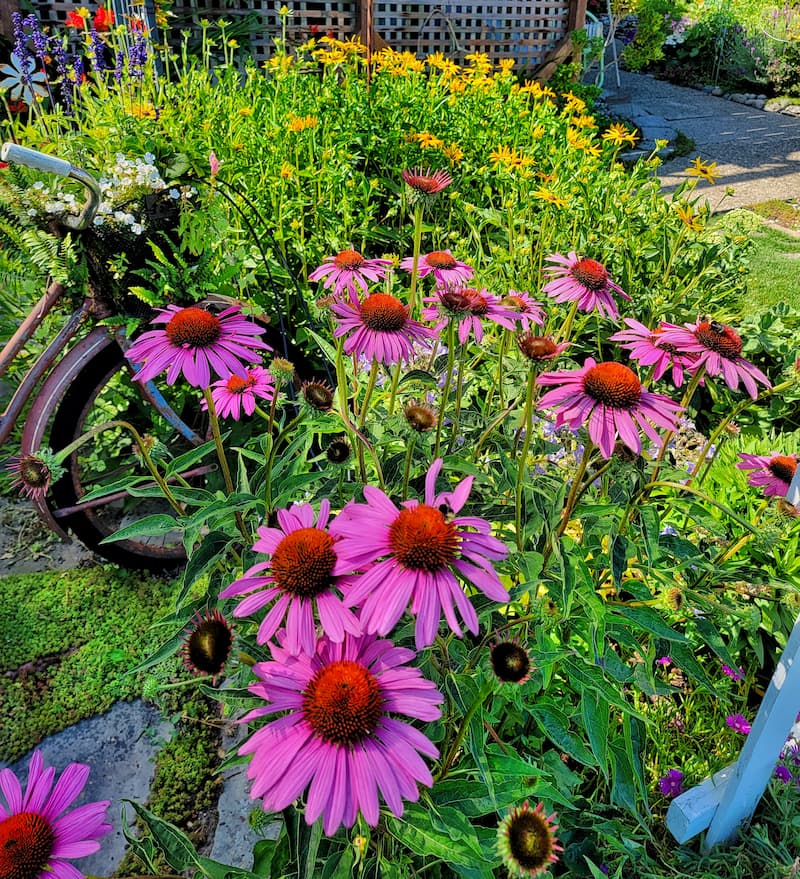
With their spiky centers, bitter taste, and rough texture, coneflowers are definitely not on the deer’s favorite menu.
But for pollinators? Total magnet. These vibrant perennials bloom from midsummer into fall and come in gorgeous shades of pink, purple, and white.
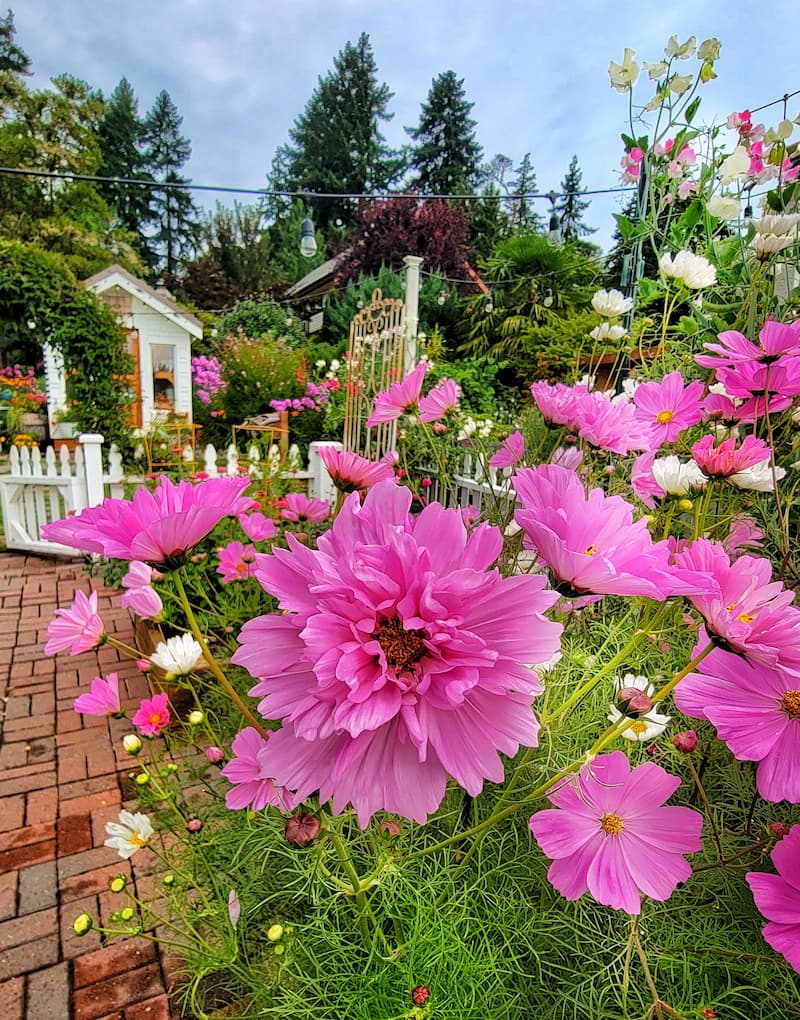
4. Cosmos
These whimsical summer annuals are a cottage garden must, and deer usually won’t touch them. The thick, bitter-tasting leaves and a natural sap called cosmosin help keep grazers away.
As a bonus, bees and butterflies love cosmos. And the more you cut, the more blooms you’ll get!
5. Daffodils
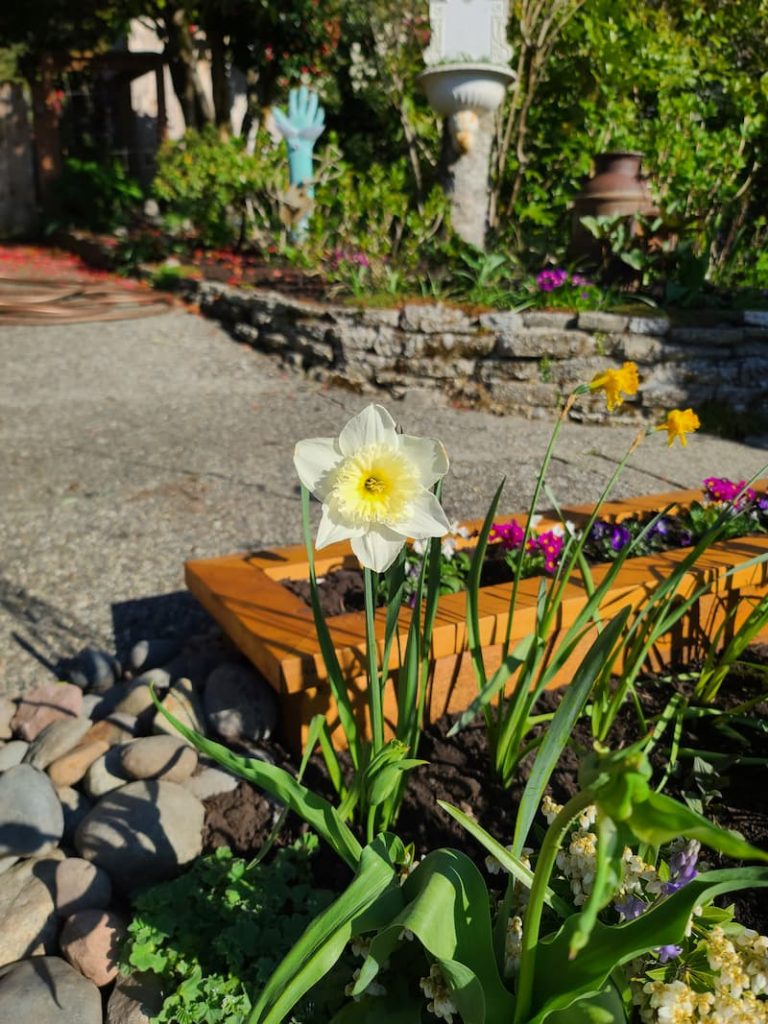
A favorite for spring color, daffodils are a great pick for keeping deer away. Their strong scent and toxic compounds make them unappetizing (and potentially harmful) to deer.
Daffodil’s bright colors can also confuse deer’s vision when identifying potential food sources.
Even after the flowers fade, daffodil foliage continues to nourish the bulb for next year’s blooms. And indoors? They make long-lasting cut flowers that instantly brighten a room.
6. Ferns
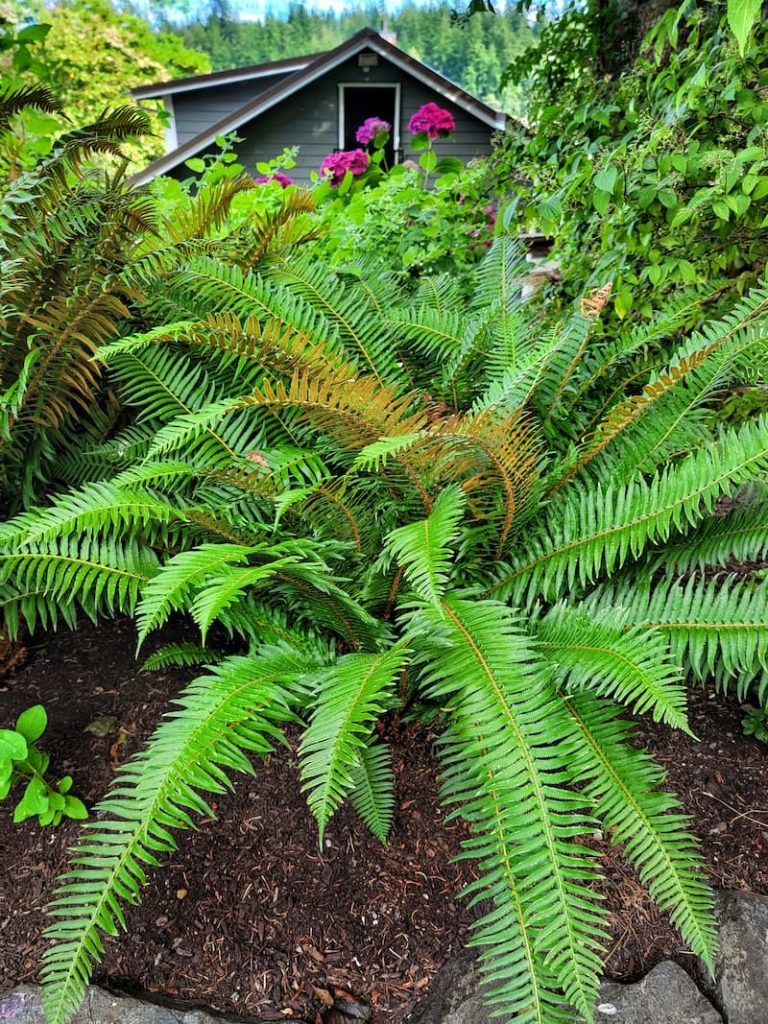
Ferns might be delicate in appearance, but they’re tough when it comes to deer resistance. The leathery texture and low nutritional value make them a snack that deer are happy to skip.
Their lush fronds add softness, texture, and movement to shaded spots in the garden, and their dense foliage can even help block deer access to other plants.
7. Foxglove
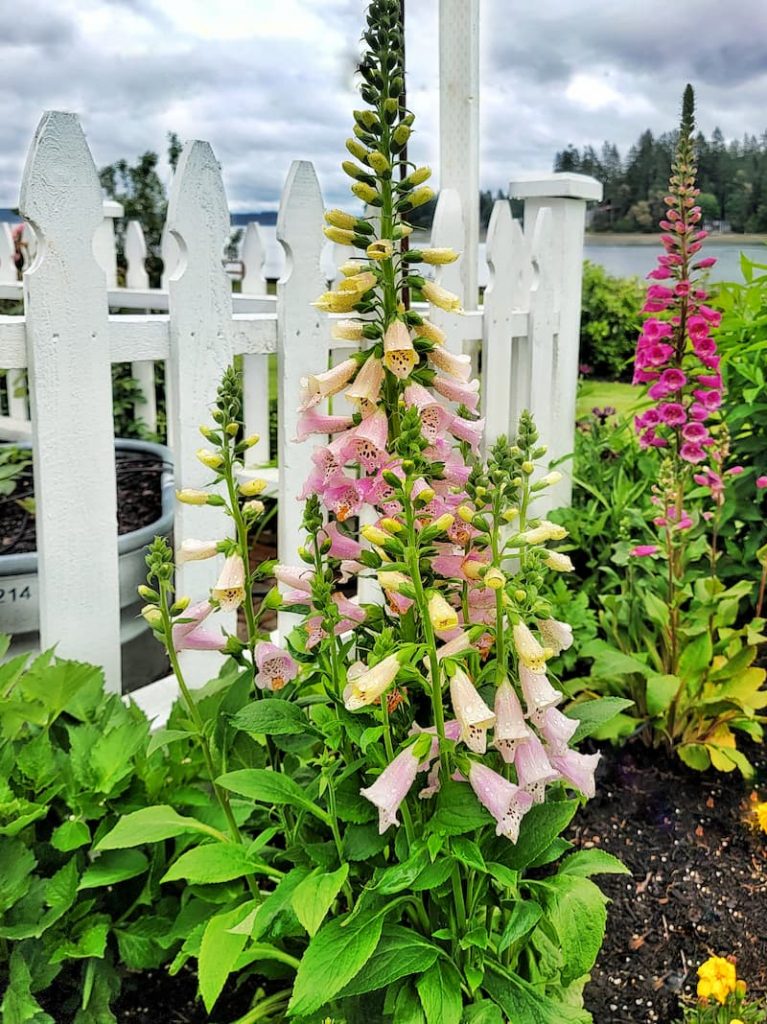
These tall, bell-shaped beauties are as deer-resistant as they come. Foxgloves contain alkaloids that give them a bitter taste and make them toxic to deer (and other animals), which is why they usually leave them alone.
Their height and dramatic blooms make foxgloves perfect for the back of garden beds or mixed in with other cottage-style flowers. Just be sure to keep them away from pets and little ones.
8. Lenten Rose (Hellebores)
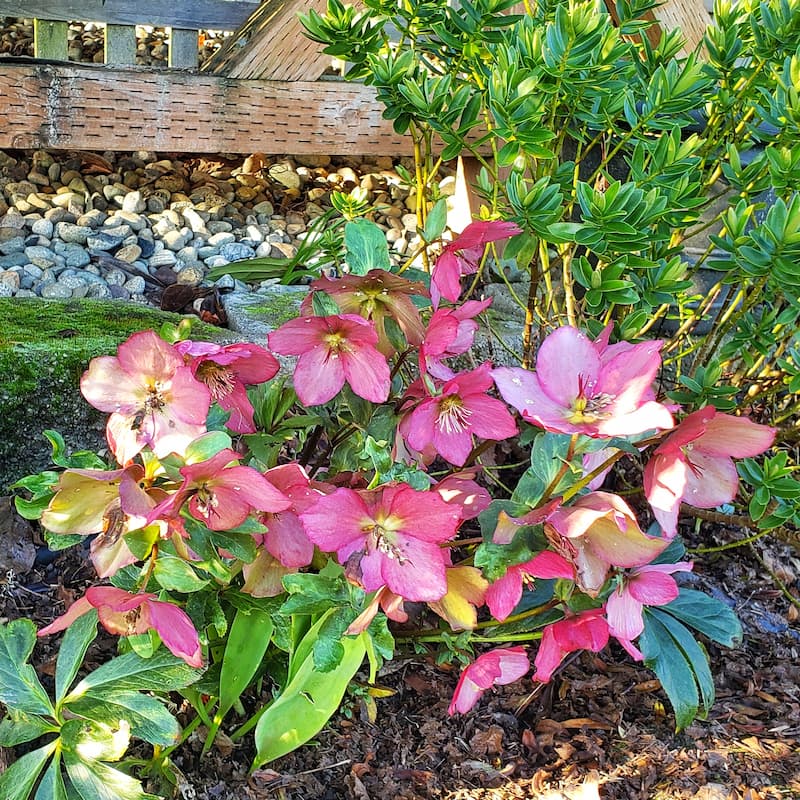
Need a little color in the late winter garden? Hellebores, or Lenten roses, bloom when almost nothing else does, and they’re not on the deer menu, thanks to their prickly foliage and strong scent.
These low-maintenance perennials are hardy, shade-tolerant, and beautiful in woodland or cottage-style gardens.
9. Larkspur
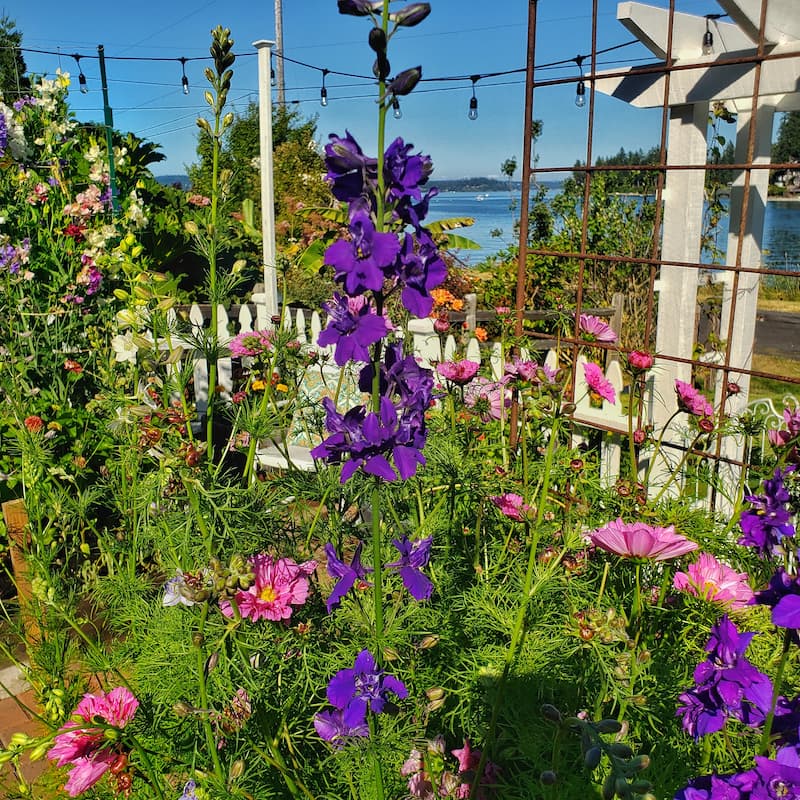
Tall, colorful, and elegant, larkspur adds vertical interest to the garden and naturally repels deer. The plant’s pointed leaves, strong scent, and toxicity make it one deer won’t mess with.
Bonus: Larkspur is beautiful in cut arrangements, adding an airy, romantic feel to your flower beds.
10. Lavender
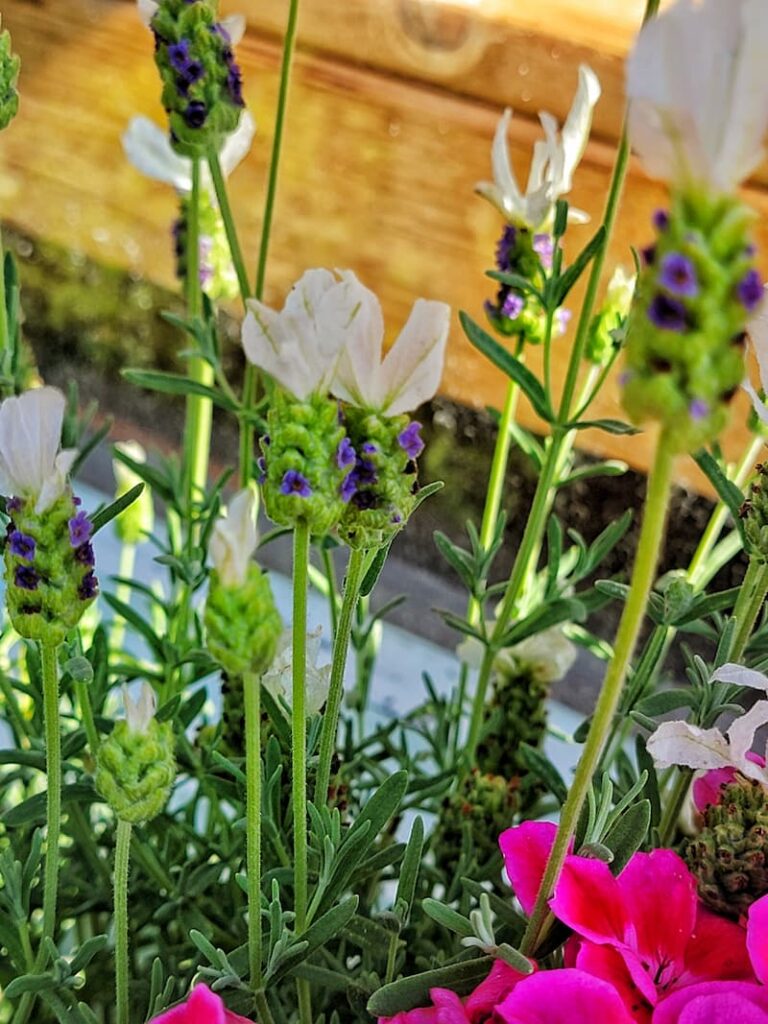
This fragrant favorite is a staple in any deer-resistant garden. Lavender’s strong scent and tough, woody stems keep deer at bay, and its silvery foliage and purple blooms are just gorgeous.
This hardy plant loves full sun and well-drained soil, and it’s as calming in the garden as it is in a vase or sachet.
11. Lilacs
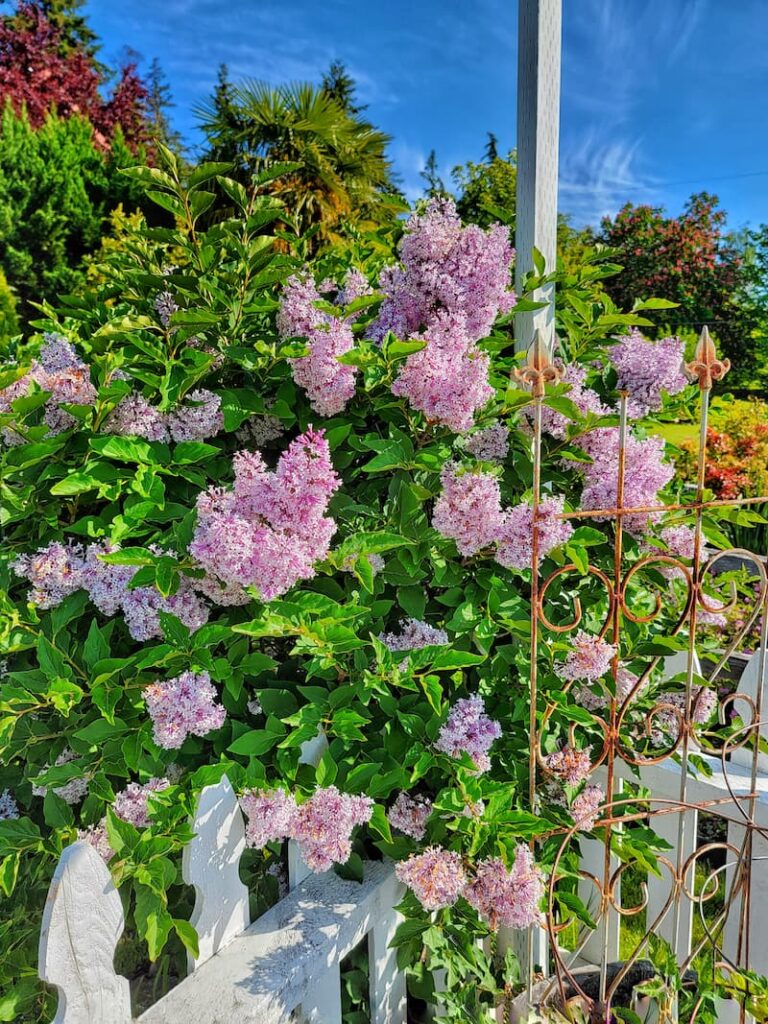
Looking for something fragrant and functional? Lilacs check both boxes. Their bold scent and bitter flavor make them unappetizing to deer, while their lush blooms fill the garden with spring beauty.
These hardy shrubs can grow tall and wide, making them ideal for a border or screen.
12. Marigolds
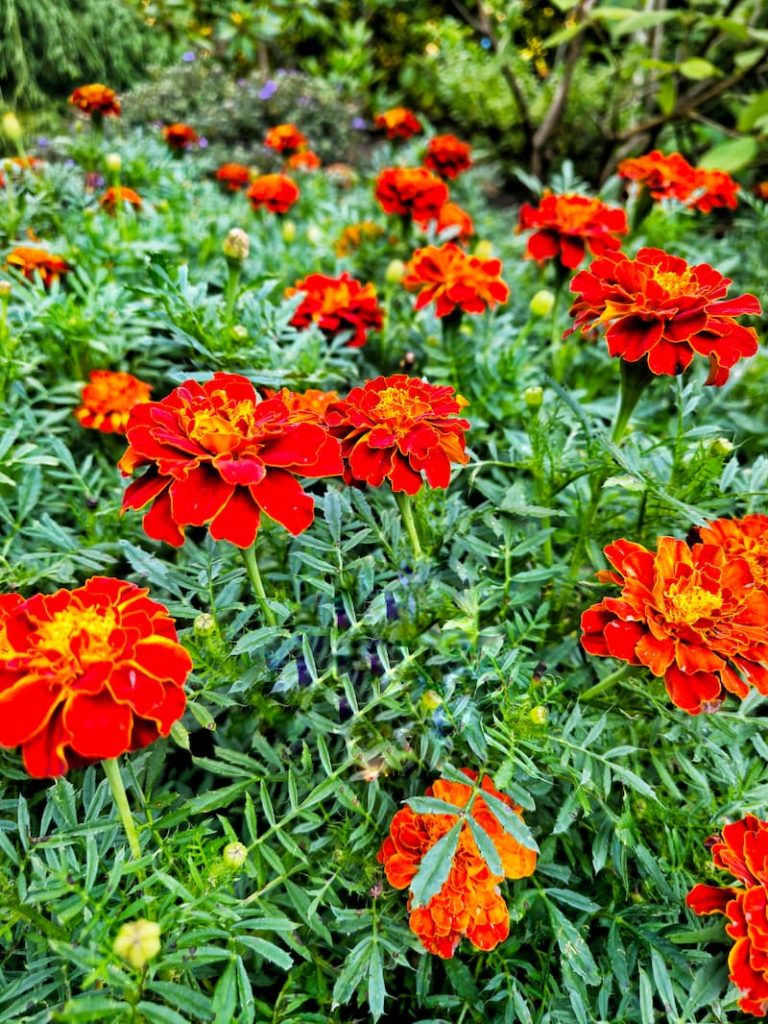
These bright orange and yellow blooms will brighten up any summer garden. They’re one of the most effective annuals for deterring deer, especially when planted near more tempting plants.
Marigolds have a pungent aroma and bitter taste that deer despise. The oils and resins found in marigolds can also repel deer.
This plant has a carnation-like flowerhead that will thrive in the sunshine and is drought-tolerant.
13. Mint
This easy-growing herb is known for its refreshing fragrance, but deer can’t stand it. The strong scent is enough to keep them away, making mint a handy border plant for protecting nearby favorites.
Just plant it in containers or confined spaces—it spreads fast!
14. Peonies
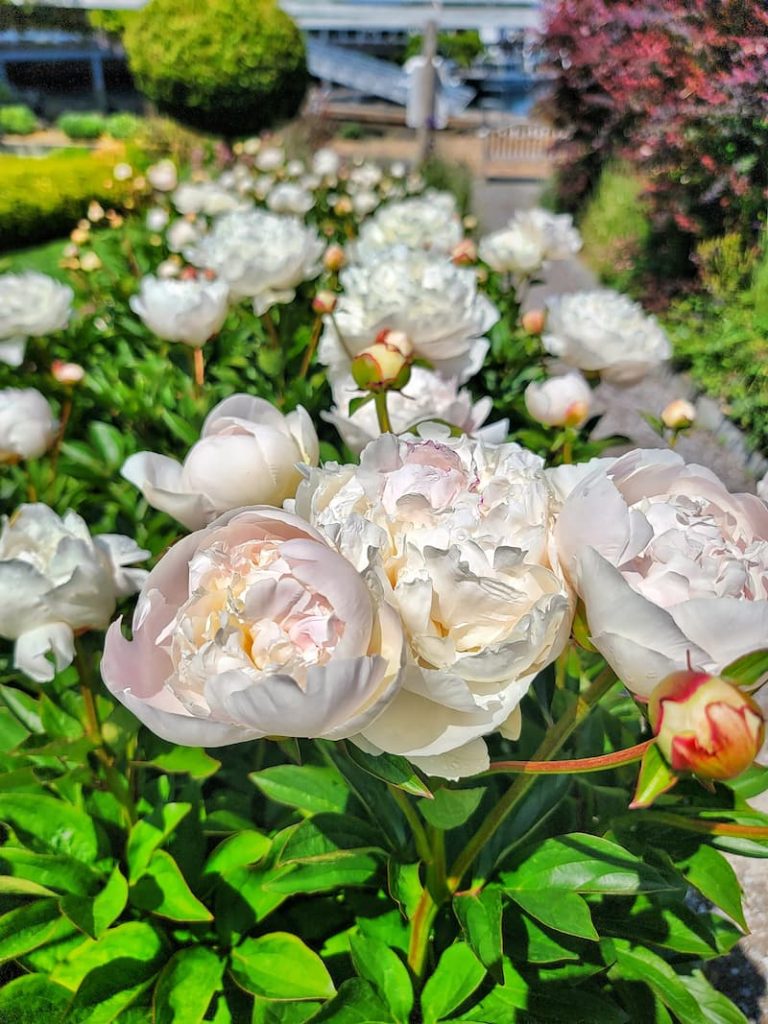
One of my favorite flowers in the cottage garden, peonies have fragrant blooms and are known to be pest-proof, including deer.
Peonies have thick, hardy stems and foliage and a strong scent that makes them unpalatable to deer and other garden pests.
These blooms will bring beauty to your garden and add a fabulous cut flower to your floral arrangements.
15. Salvia
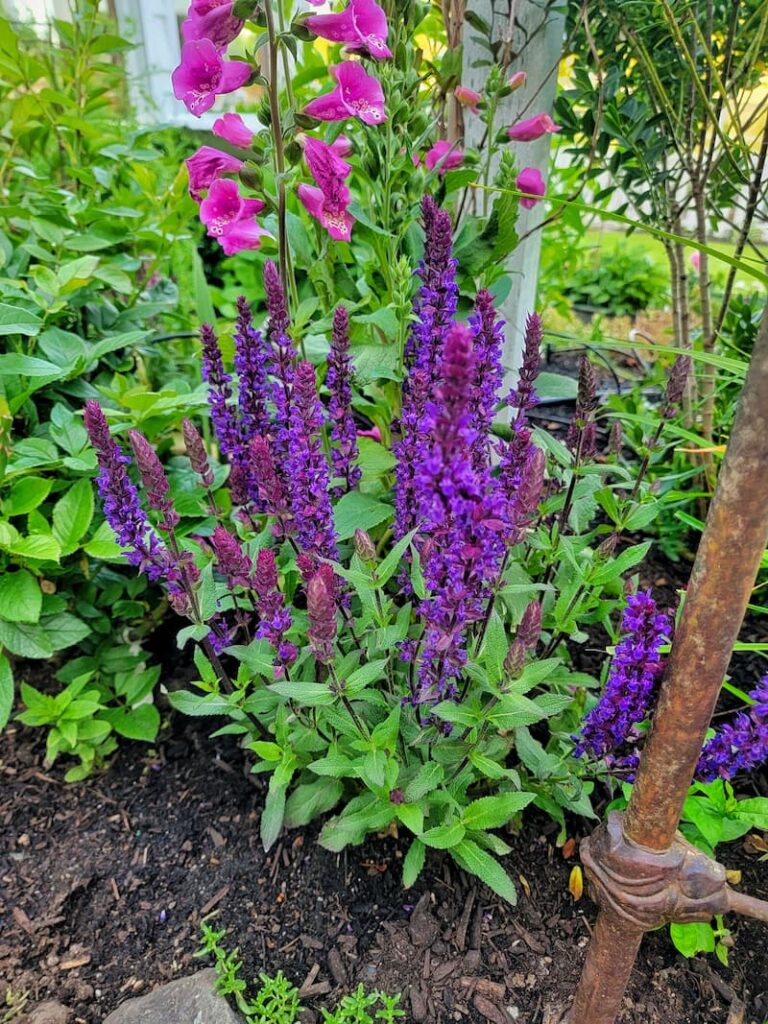
Salvia’s fuzzy leaves and potent smell make it one of the least appetizing plants for deer. But for bees and hummingbirds? It’s a total magnet.
This drought-tolerant perennial thrives in sun or partial shade and brings bold spikes of color to your flower beds.
16. Sedum

Sedum is a rockstar when it comes to low-maintenance gardening, and deer usually won’t touch it. Its fleshy leaves have a bitter taste, and the plant’s low protein content makes it less appealing to browsing deer.
There are many varieties to choose from, but Sedum ‘Autumn Joy’ is a favorite in my garden. It starts out green, then transforms into dusty rose flower clusters by late summer.
17. Shasta Daisies
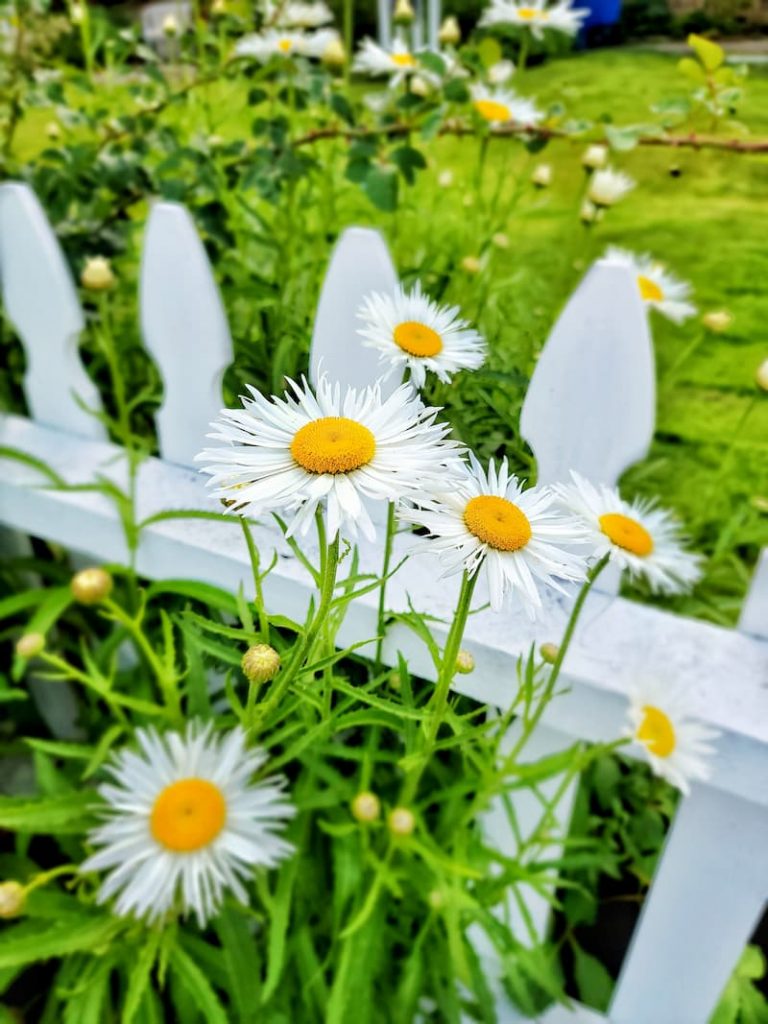
With their sharp leaves and bitter flavor, Shasta daisies aren’t a deer favorite. Their sturdy stems also make them harder to chew, which means your blooms are more likely to stay intact.
They’re a great perennial to divide and spread around your garden, and they add a cheerful pop of white to early summer bouquets.
18. Snapdragons
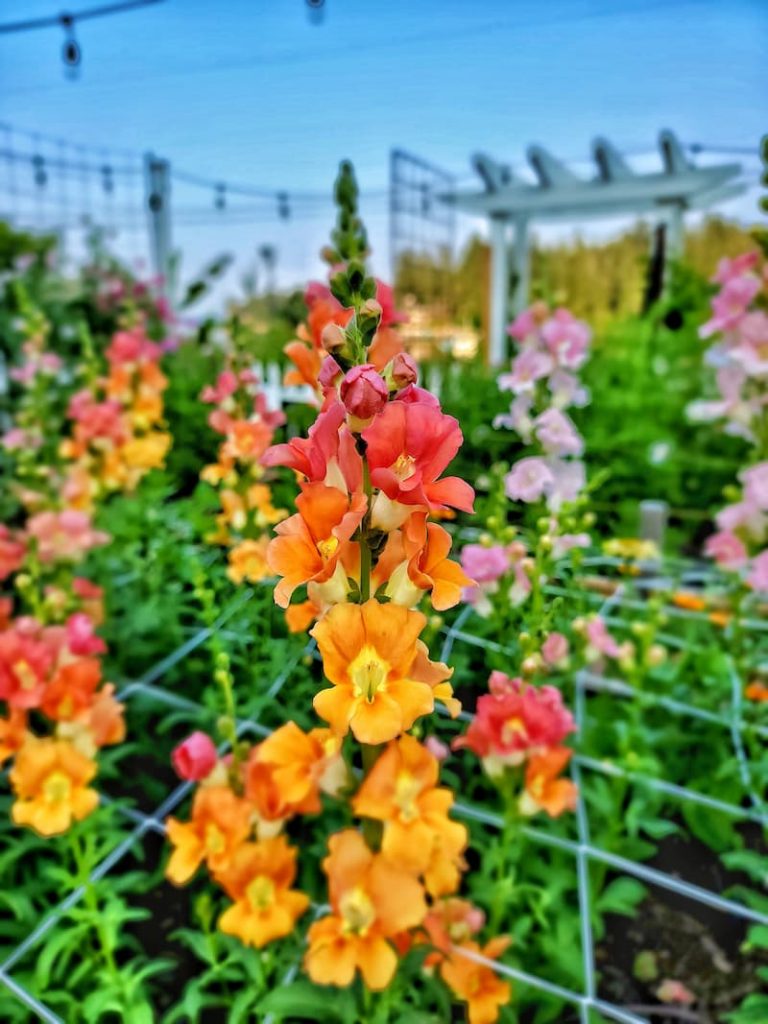
Snapdragons may look delicate, but they pack a punch when it comes to deer resistance. Their bitter taste and fibrous texture tend to keep hungry grazers away.
They thrive in full sun, come in a rainbow of colors, and are one of my favorite filler flowers for arrangements. Tall and strong, snapdragons can reach up to 3–4 feet depending on the variety.
19. Strawflower
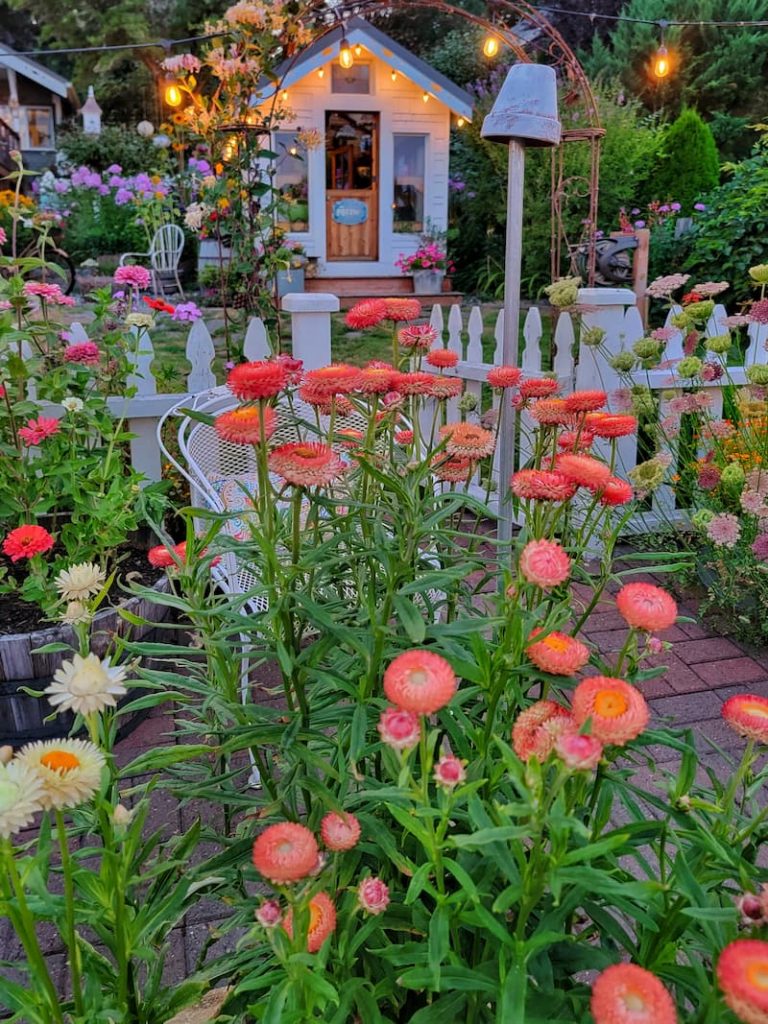
Strawflowers are one of the best deer-resistant annuals you can grow. Their intense scent and stiff, papery petals make them totally unappetizing to deer.
They resemble daisies but are built for long-lasting performance, both in the garden and in dried flower arrangements. These blooms are tough, colorful, and full of charm.
20. Yarrow
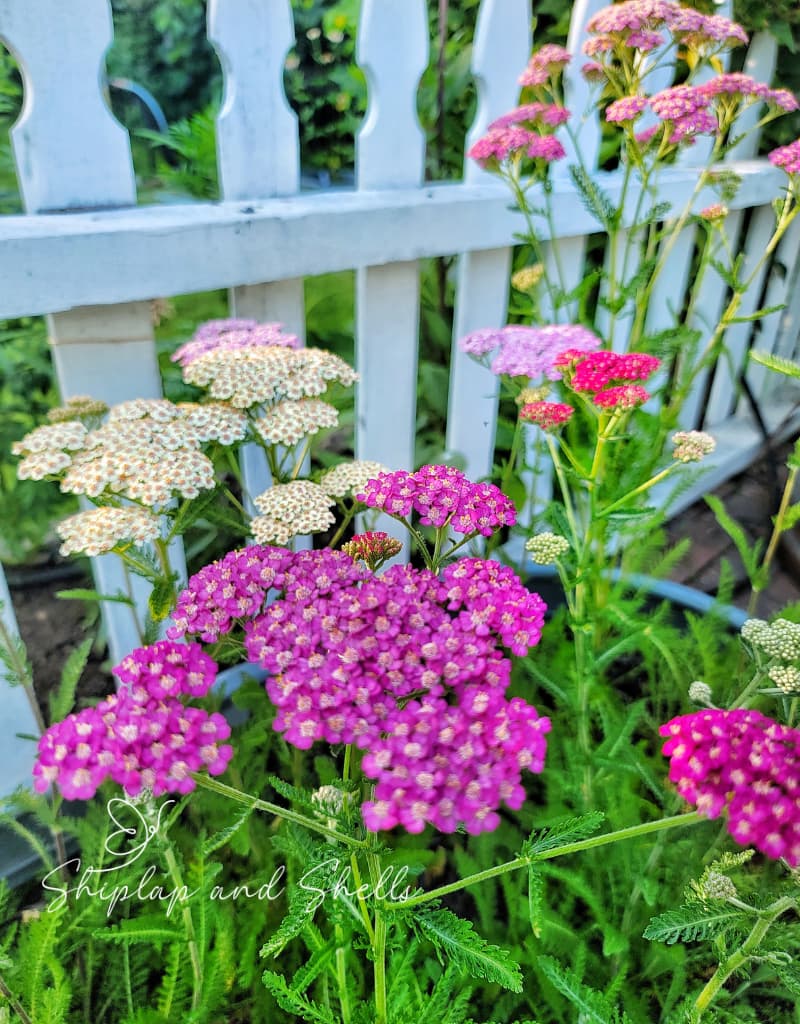
Deer tend to avoid yarrow thanks to its bitter taste, strong scent, and waxy leaves that are hard to digest. This perennial is both beautiful and tough, and it’s great for attracting pollinators.
Yarrow produces clusters of tiny blooms in shades of yellow, pink, white, and red. It’s perfect for cutting, drying, or simply enjoying in the garden all season long.
21. Zinnias
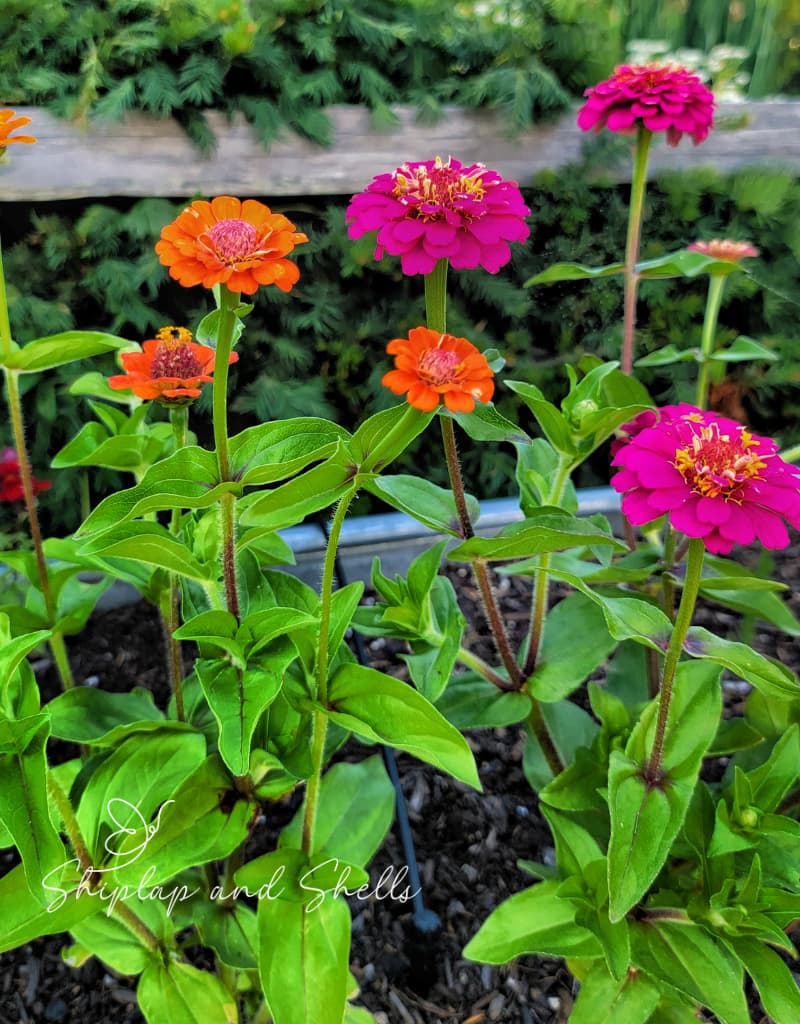
Zinnias are true summer staples, and deer typically steer clear. Their bold scent and thick leaves make them a less-than-ideal snack for deer, which is great news for your flower beds.
They’re one of my favorite cut flowers because they’re endlessly cheerful and bloom like crazy the more you cut. From bright corals to soft pastels, zinnias are a must-have in any sunny garden.
22. Allium
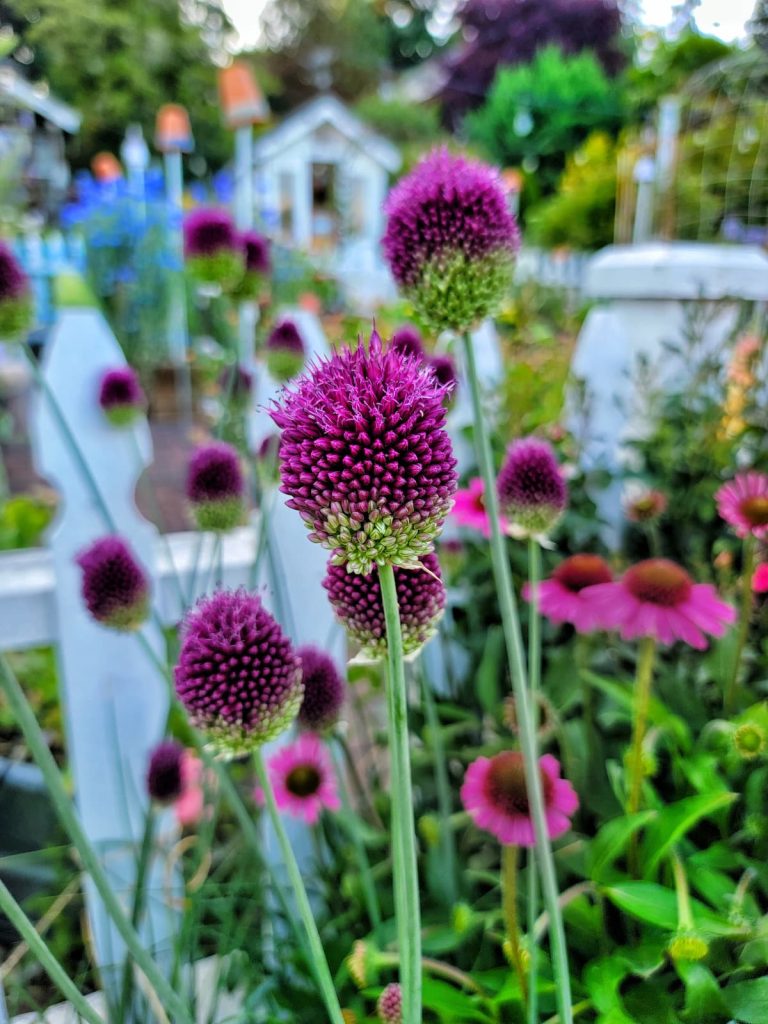
With their tall stalks and bold, globe-shaped blooms, alliums make a big visual impact, and deer typically steer clear. Thanks to their close relation to onions and garlic, alliums have a strong, pungent scent that most grazers find unappealing.
These low-maintenance perennials are great for adding height to your garden beds and long-lasting beauty to floral arrangements. As a bonus, they attract bees and butterflies while keeping the deer at bay.
23. Geraniums
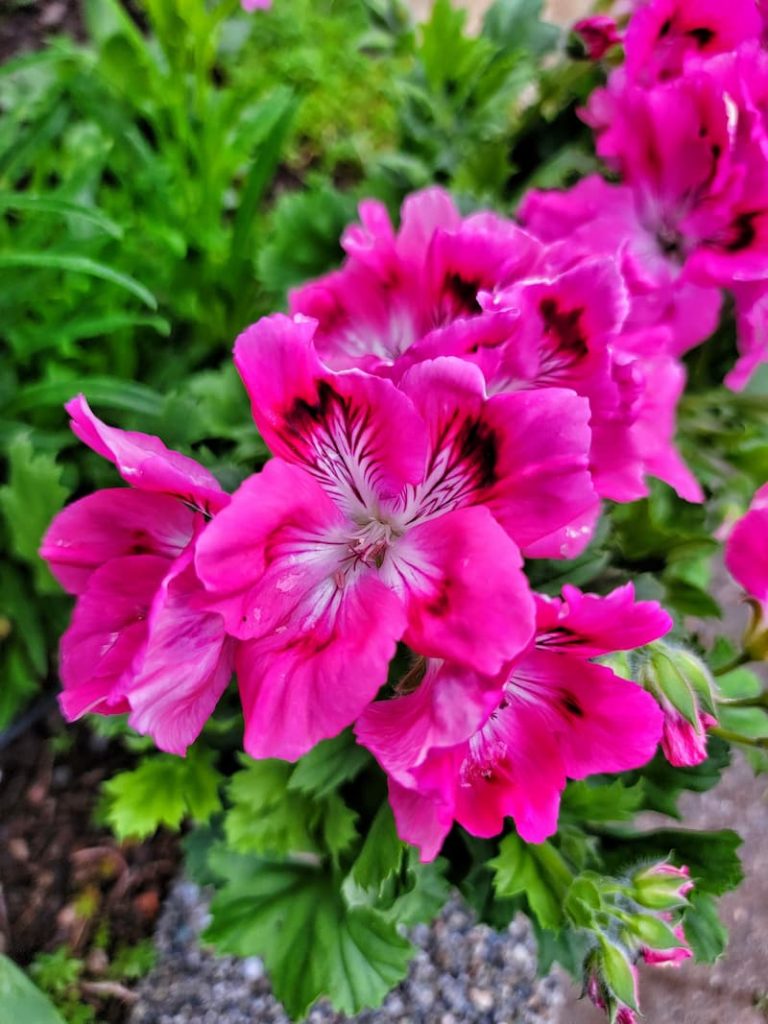
Deer aren’t fans of the strong, citrusy scent that geranium leaves give off, making these blooms a smart pick for container gardens or planting near more vulnerable flowers.
With colors ranging from bold reds to soft pinks and snowy whites, geraniums add a vibrant pop to borders, baskets, or pots. Regular deadheading will keep them blooming all season long.
24. Blazing Star (Liatris)
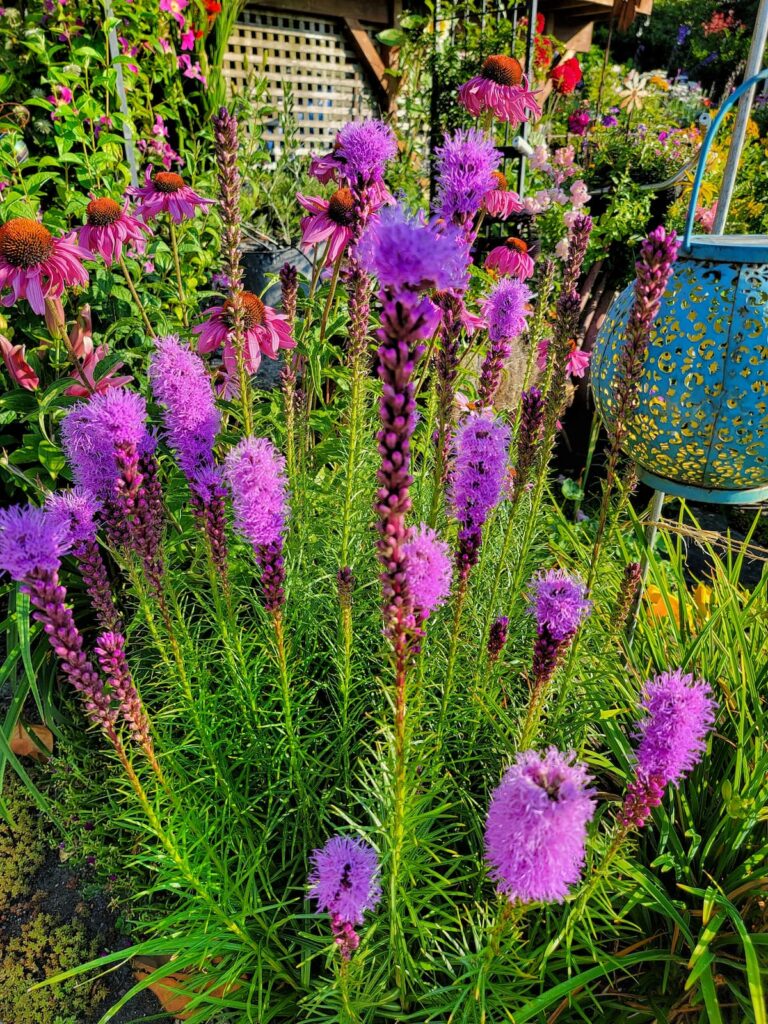
Blazing star lives up to its name with tall spikes of vivid purple flowers that light up the summer garden. Deer don’t like the plant’s rough texture and mild scent, which makes it a naturally resistant choice.
This pollinator favorite thrives in well-drained soil and brings color from midsummer into fall. Plus, it’s drought-tolerant and super easy to grow.
25. Bearded Iris
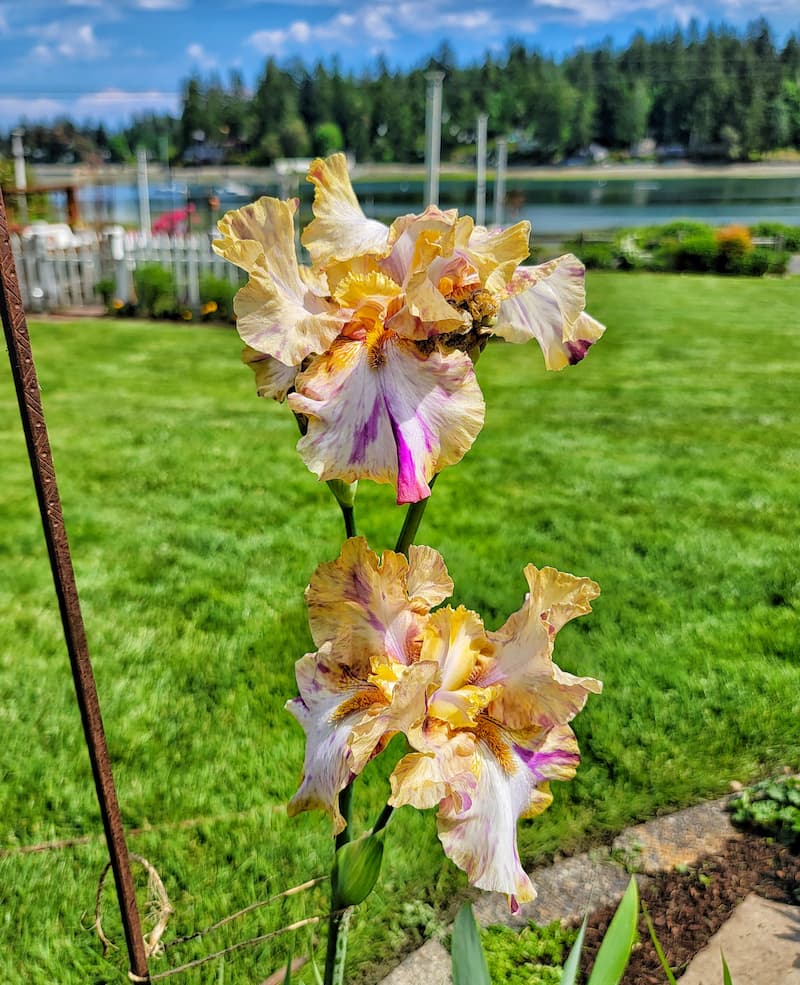
With their showy flowers and sword-like foliage, bearded irises are both stunning and unappetizing to deer. Their slight bitterness and sturdy leaves make them less appealing to nibblers.
They bloom in late spring to early summer and come in an array of breathtaking color combinations. Plant them in full sun and enjoy a growing clump year after year.
26. Statice (Sea Lavender)
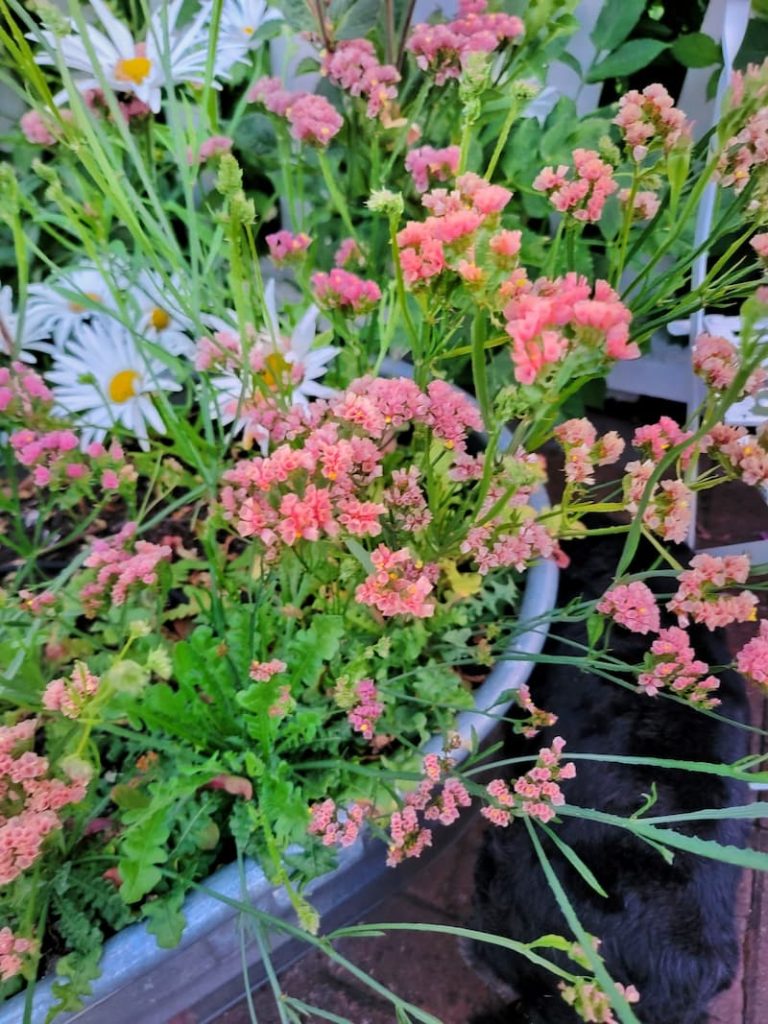
This under-the-radar flower is a garden gem. Statice has leathery foliage and a salty taste that deer dislike—but it’s a favorite for dried flower lovers thanks to its papery, long-lasting blooms.
Perfect for sunny spots and coastal gardens, statice adds cheerful color and a unique texture to flower beds and arrangements.
27. Aster
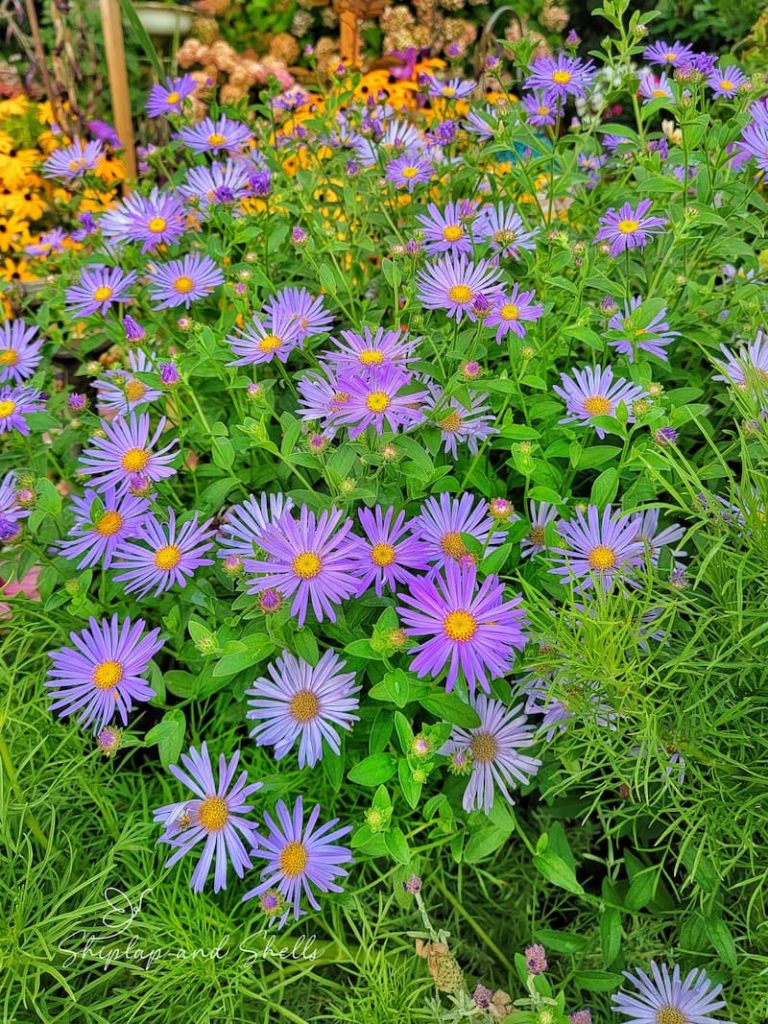
Asters brighten up the late-season garden just when it needs it most. These fall bloomers are generally left alone by deer thanks to their bitter leaves and strong floral scent.
They come in beautiful shades of purple, pink, blue, and white, attracting butterflies like crazy. Asters thrive in well-drained soil and are a great fit for borders and wildflower gardens.
28. Rosemary

This aromatic herb pulls double duty—great in the kitchen and great at keeping deer out of your garden. Rosemary’s strong scent and needle-like leaves make it difficult and unappetizing for deer to chew.
It’s drought-tolerant, loves full sun, and adds evergreen structure and subtle blue blooms to garden beds and borders.
29. Bachelor’s Button (Cornflower)
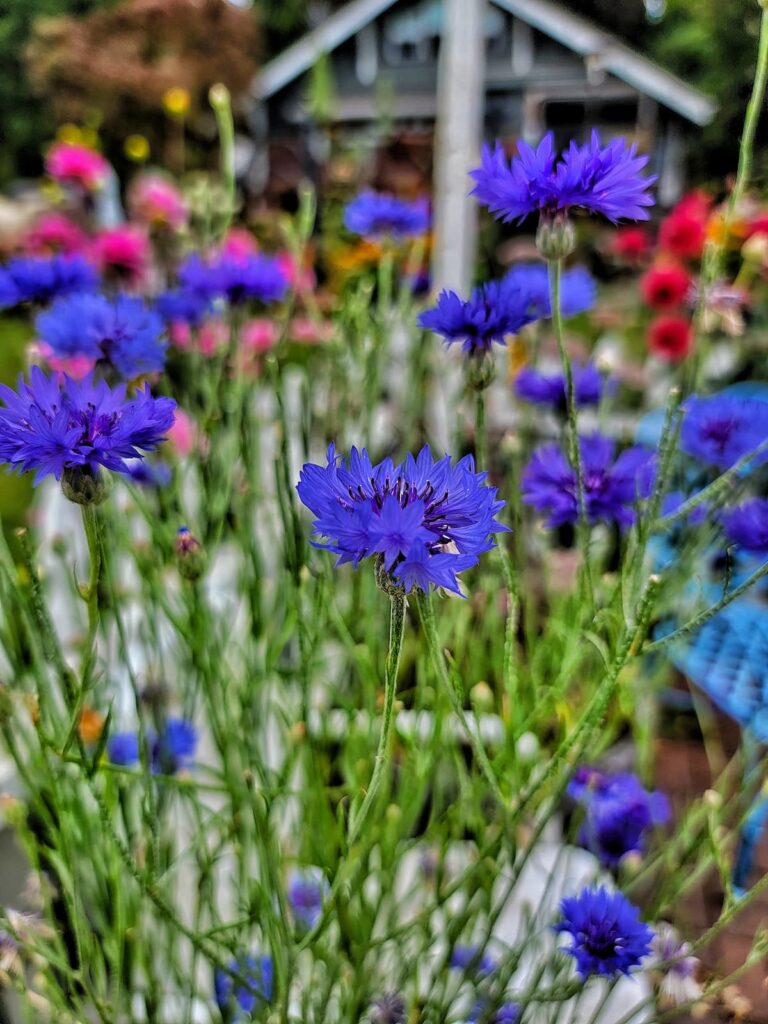
These charming, frilly blooms come in shades of blue, pink, and white, and deer typically pass them up. The coarse leaves and slightly bitter taste make them less enticing.
Easy to grow and self-seeding, bachelor’s buttons bring wildflower charm to cottage gardens and make great cut flowers all the way through fall.
30. Sweet Alyssum
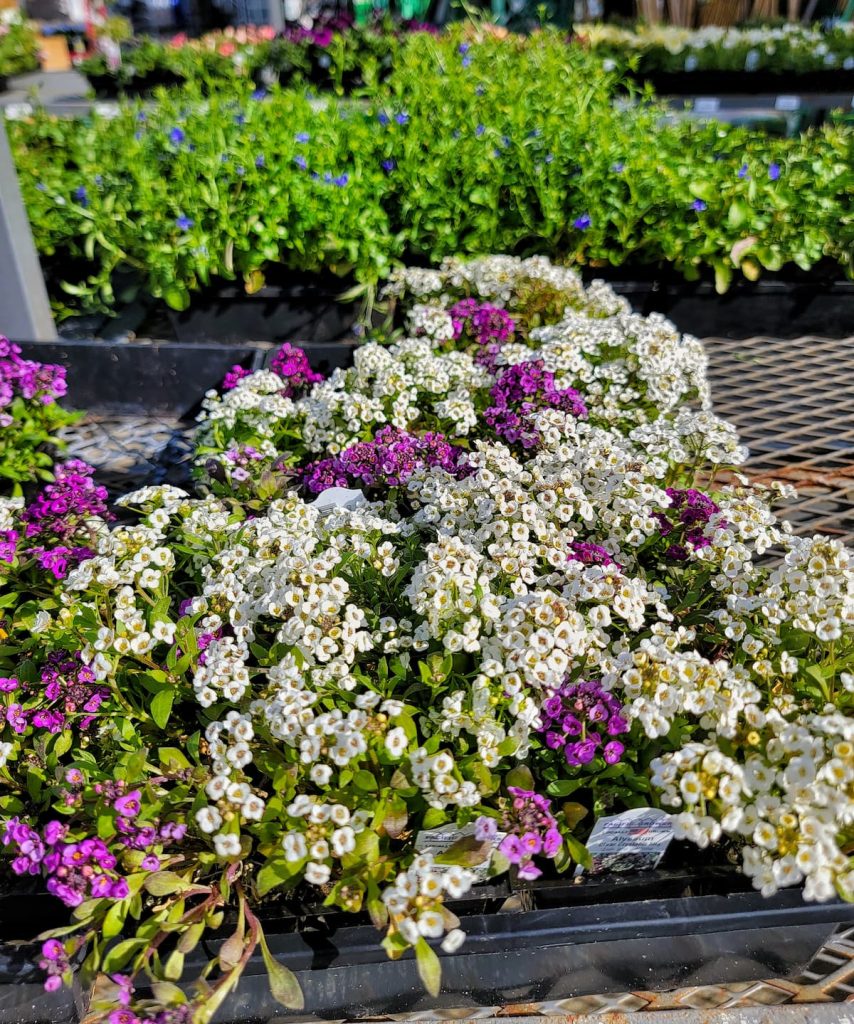
Don’t let its delicate looks fool you. Sweet alyssum is surprisingly tough when it comes to deer resistance. Its strong honey scent and small flowers don’t appeal to deer.
This low-growing annual is perfect for filling gaps, softening garden edges, or spilling from containers. It thrives in cooler weather and adds a lovely touch of white, pink, or purple to spring and fall gardens.
31. Lantana
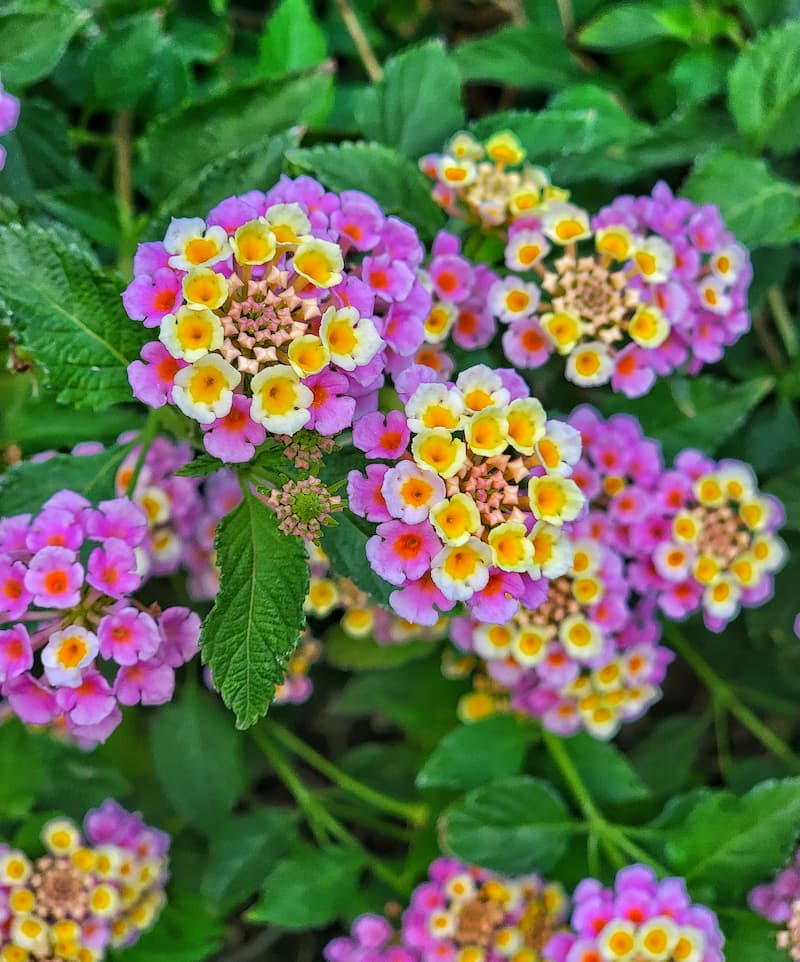
With clusters of brightly colored flowers and rough, scented leaves, lantana is one plant that deer usually avoid. It’s a go-to in warmer climates where you want nonstop color and low maintenance.
Lantana is heat-loving, drought-tolerant, and attracts butterflies and hummingbirds. Use it in containers, borders, or as a spreading ground cover.
32. Calendula (Pot Marigold)
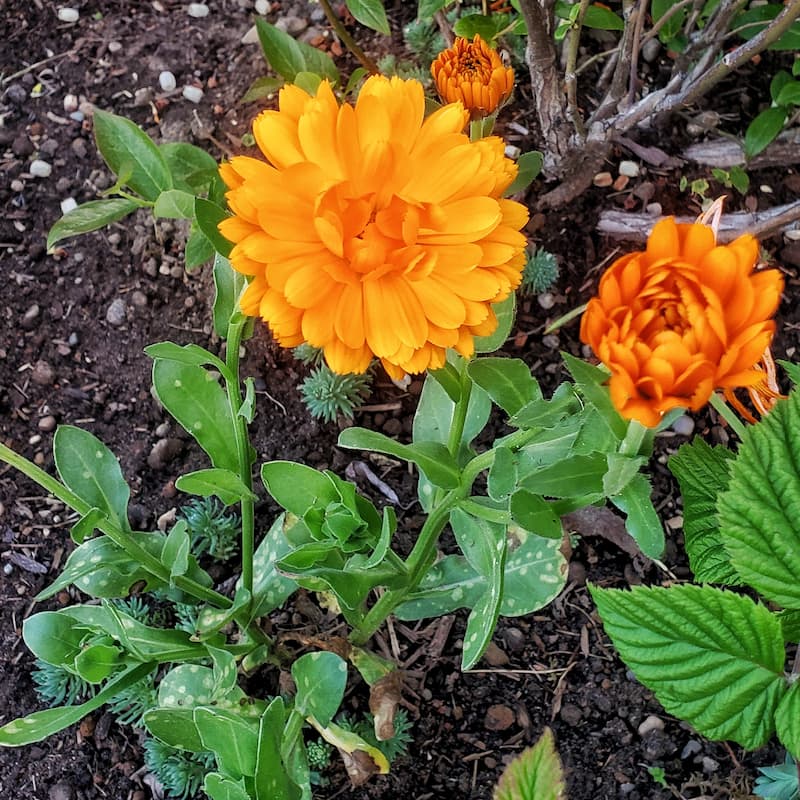
Calendula’s cheerful orange and yellow blooms look right at home in any garden, and deer don’t like the pungent smell or slightly bitter flavor.
Easy to grow from seed, calendula is a cool-season annual that blooms until frost. You can even toss the petals into salads or baked goods for a splash of edible color.
33. Bleeding Heart
Known for its romantic, heart-shaped flowers, bleeding heart thrives in shady spots and adds soft beauty to spring gardens. All parts of the plant are toxic, which naturally deters deer.
It prefers moist, well-drained soil and often goes dormant in summer, so don’t panic if it disappears after blooming; it’ll be back next year, ready to bloom again.
34. Basil
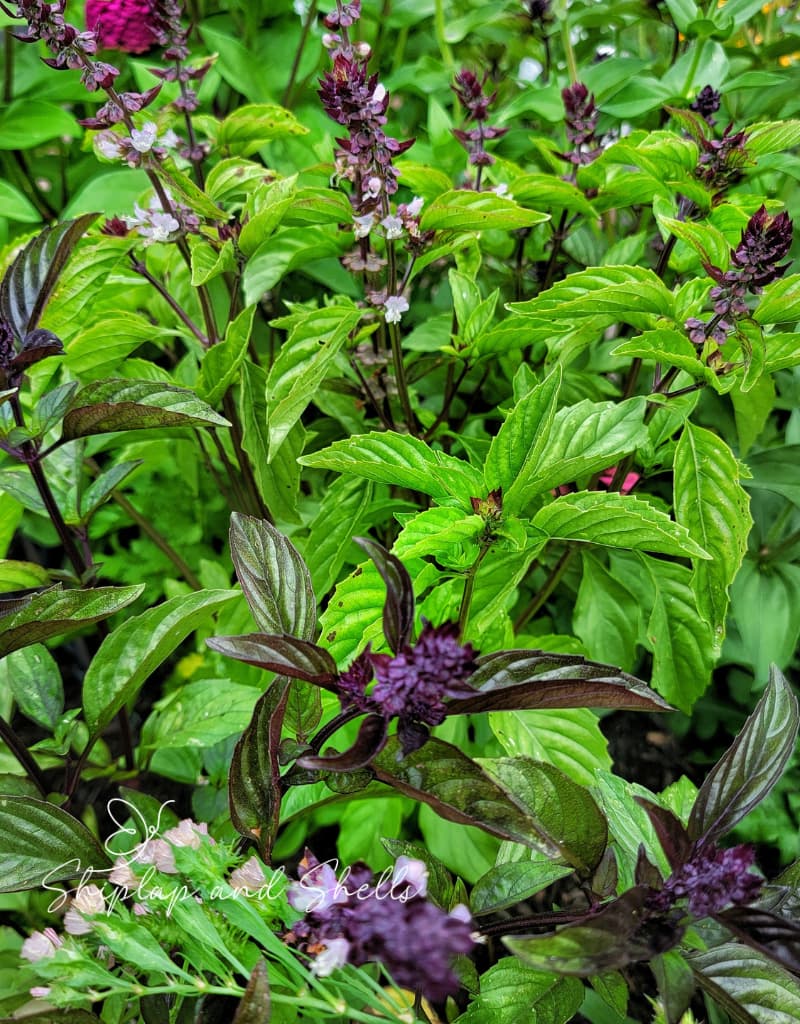
This flavorful herb is a kitchen favorite and a deer deterrent. Its strong aroma and essential oils are off-putting to deer, making it a great companion for more delicate plants.
Basil thrives in sunny spots and is happy in containers or garden beds. Harvest frequently to keep it full and bushy—and to keep deer from getting too curious.
35. Astilbe
Astilbe brings soft, feathery plumes to shady gardens, and deer usually leave it alone. Its bitter taste and light toxicity make it one of the more reliable deer-resistant perennials.
Plant it in moist, shady spots and enjoy blooms in pink, red, white, or lavender from early to midsummer.
36. Poppies
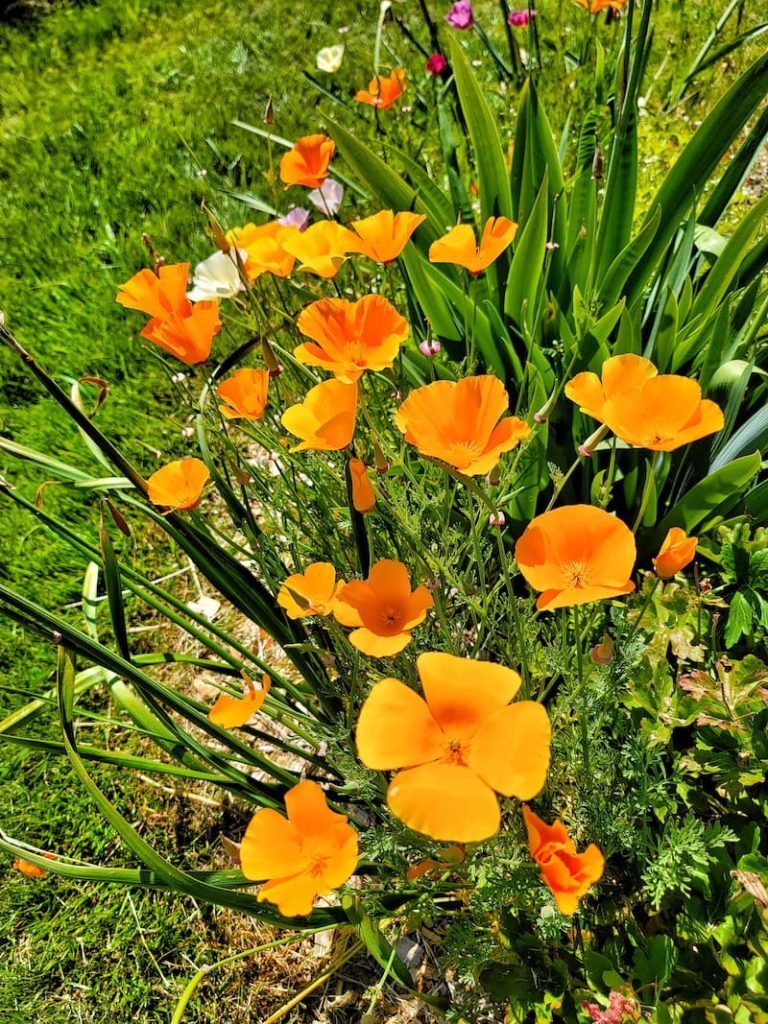
Poppies are garden showstoppers with their silky, jewel-toned petals, and deer tend to give them a wide berth. Their leaves are coarse, their taste is bitter, and their self-seeding habit makes them easy to enjoy year after year.
Plant poppies in full sun and well-drained soil, and they’ll reward you with low-maintenance color from late spring to early summer.
Common Questions About Keeping Deer Out of the Garden
What Plants Do Deer Hate the Most?
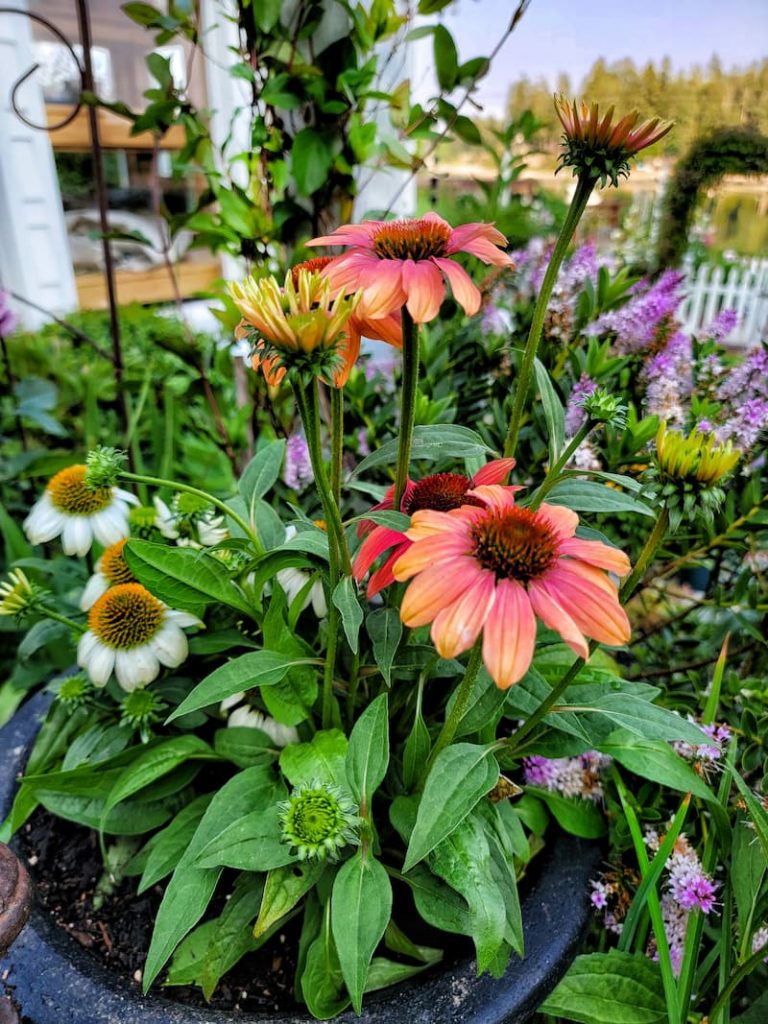
Deers avoid certain plants due to their strong scents, prickly texture, or bitter flavors. Incorporating these plants into your garden can help deter deer naturally. Here’s a list of some plants that deer usually dislike:
Herbs
Flowers
Do Coffee Grounds Keep Deer Away?
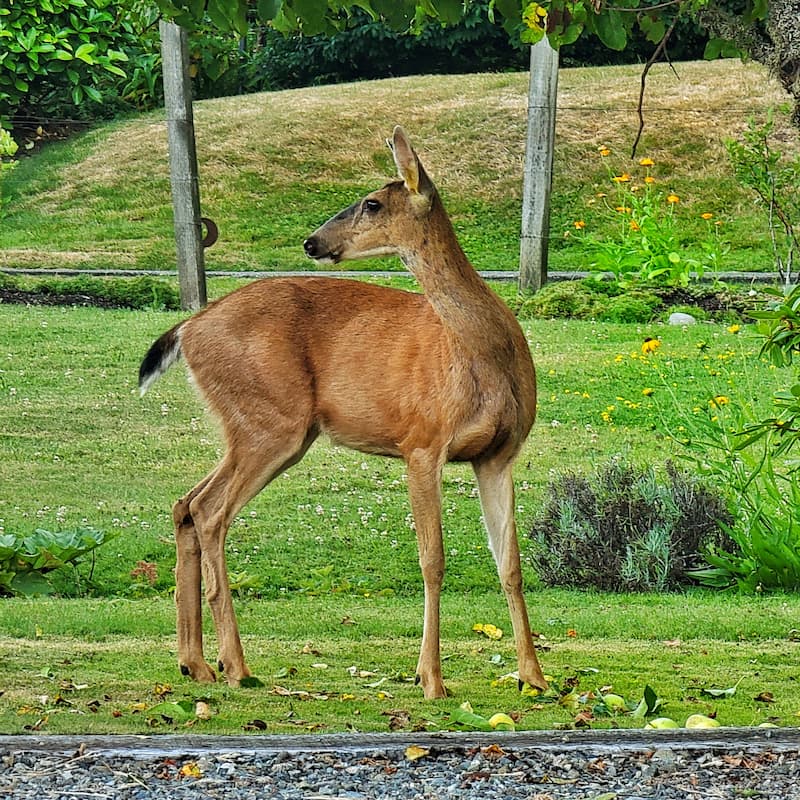
Using coffee grounds as a deer deterrent isn’t scientifically proven, but they might help, especially when paired with other methods.
Their strong smell and slightly abrasive texture can make garden beds less appealing to curious deer. They won’t replace commercial repellents or fencing, but if you’re already composting or mulching, it doesn’t hurt to give this eco-friendly trick a try.
Does Sprinkling Cinnamon Keep Deer Away?
Cinnamon isn’t widely recognized as a go-to deer repellent, but its strong scent could be enough to discourage light browsing.
While it’s not as effective as garlic, soap, or commercial repellents, it’s non-toxic, won’t harm your plants, and might be worth experimenting with if you’re leaning into more natural deterrent methods.
Can You Spray Vinegar on Plants to Keep Deer Away?
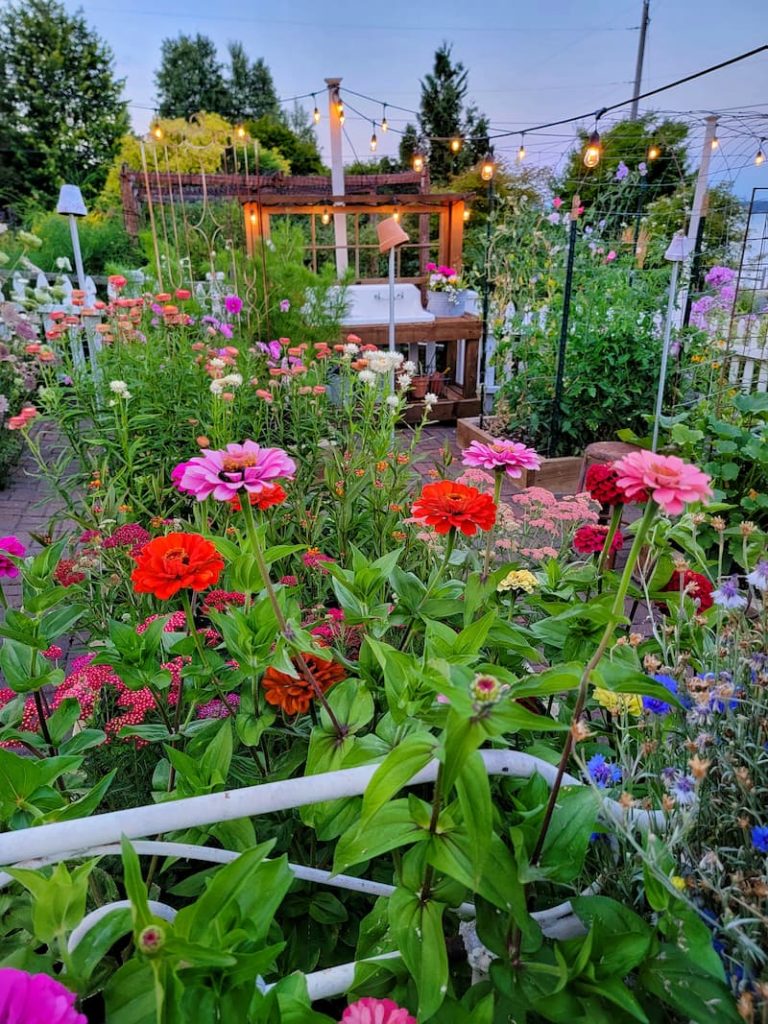
Yes, vinegar’s strong smell can help repel deer, but use it with caution. Vinegar is acidic and can damage plants if sprayed directly and undiluted.
To use it safely, spray it around the garden or on nearby surfaces instead of directly on your plants. It’s a quick, inexpensive option, but like most natural repellents, it’s best used alongside other deterrent strategies.
Here’s how you can use vinegar safely as a deer deterrent:
What is the Best Homemade Deer Repellent?
Here’s a traditional gardener’s recipe widely used and recommended within the gardening community:
Ingredients:
Instructions:
Additional Tips:
Garden Supplies and Tools
Check out my favorite garden supplies and tools for the growing season. Whether you’re looking for potting soil or deer repellent, you’ll find what I use in my own garden.
Final Thoughts About Deer Resistant Plants in the Garden
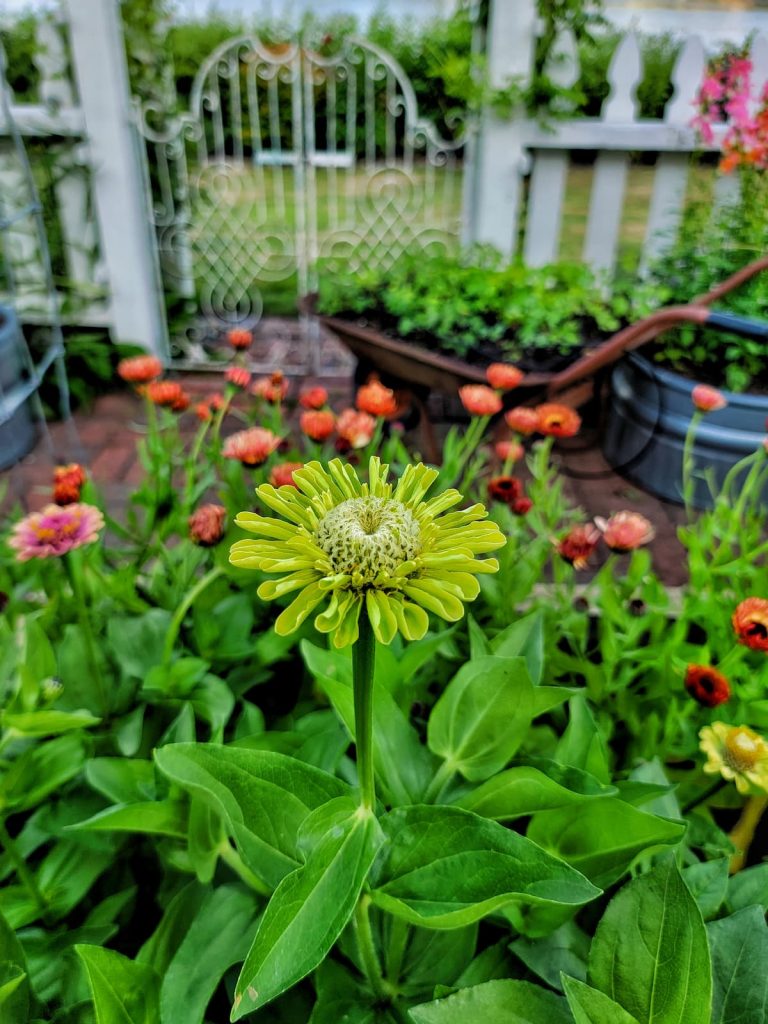
Growing a beautiful garden is such a joy, and there’s nothing more frustrating than seeing your hard work turned into a buffet for the local deer.
While no plant is 100% deer-proof, choosing deer-resistant flowers and plants can go a long way toward protecting your garden. I hope this list helps you create a space that’s just as stunning as it is low-maintenance, and less likely to be snacked on overnight!
Have a favorite deer-resistant plant to add to the list? I’d love to hear from you in the comments below. And if you found this post helpful, feel free to share it with a fellow gardener who’s also tired of feeding the deer unintentionally!
Until next time,
Happy Gardening!

I’m a self-taught hobby gardener. Everything I share on my blog is my opinion and what has worked for me.
Follow Me for More Inspiration
Shop my Amazon Storefront, LTK sources, and favorite home decor, garden, and lifestyle products. When you purchase from one of my links, I earn a small commission, which helps me continue sharing all the content you expect on my blog.
Be sure to follow me on Pinterest, Instagram, Facebook, TikTok and LIKEtoKNOW.it. Do you like gardening? Join my Facebook Gardening Tips & Tricks group.

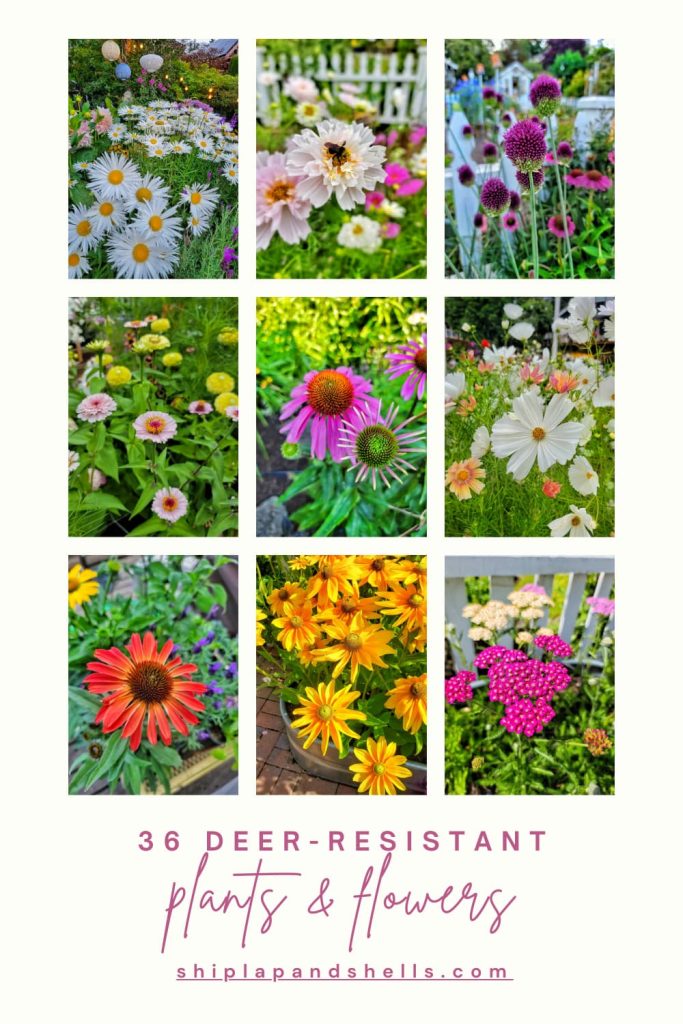

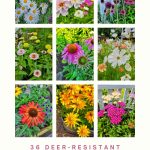
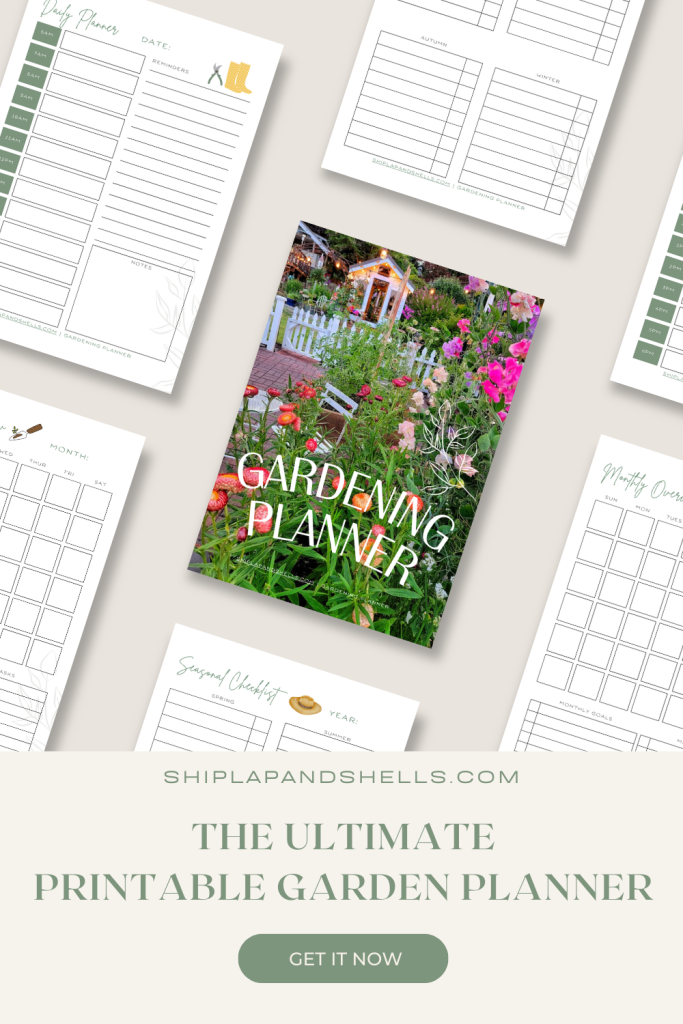
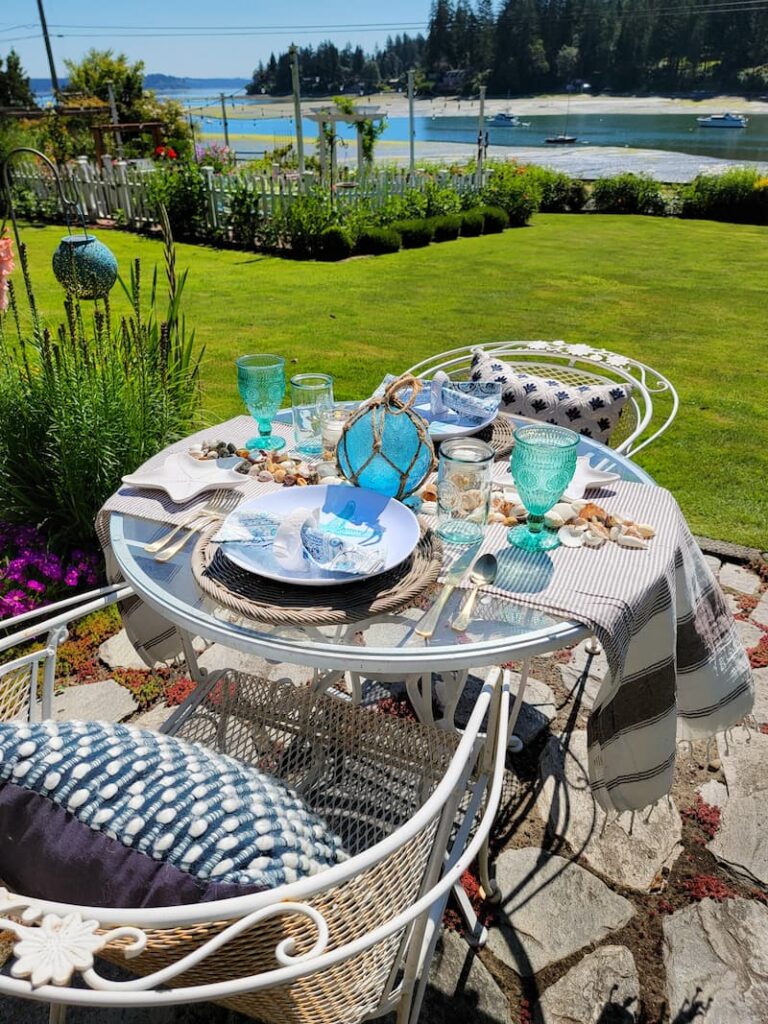
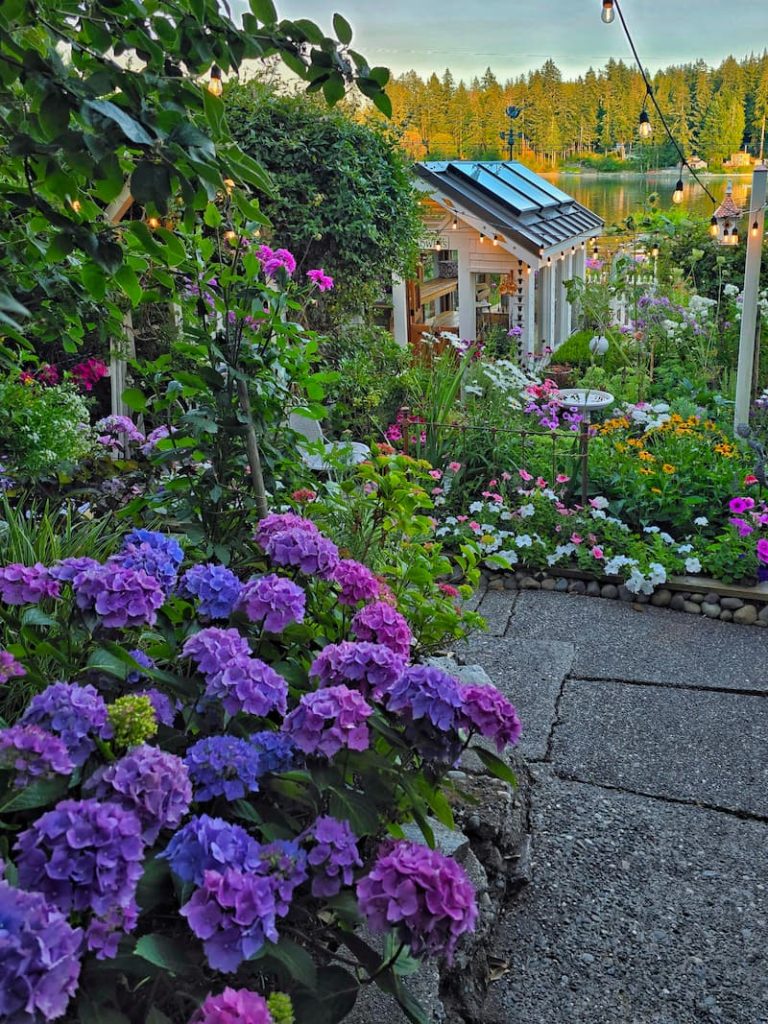
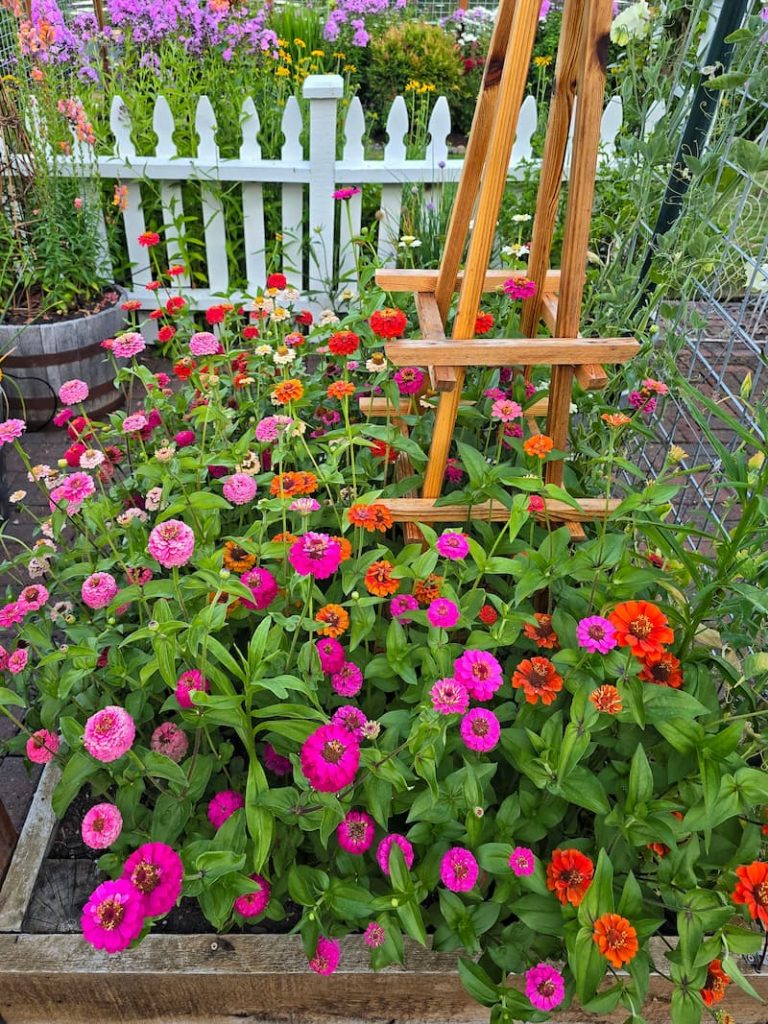

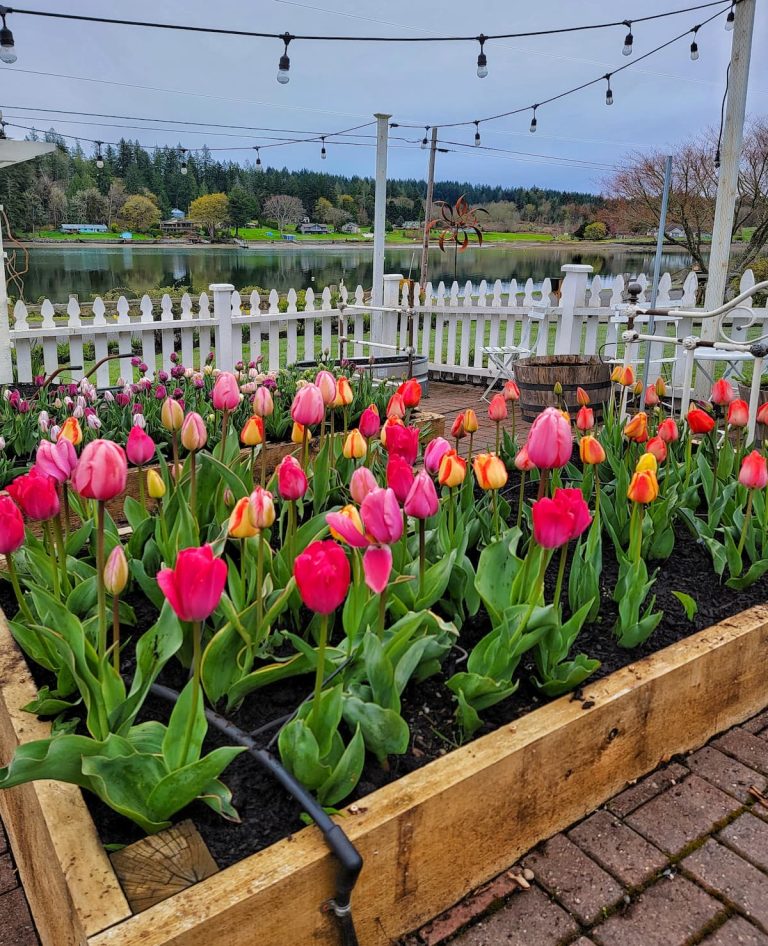
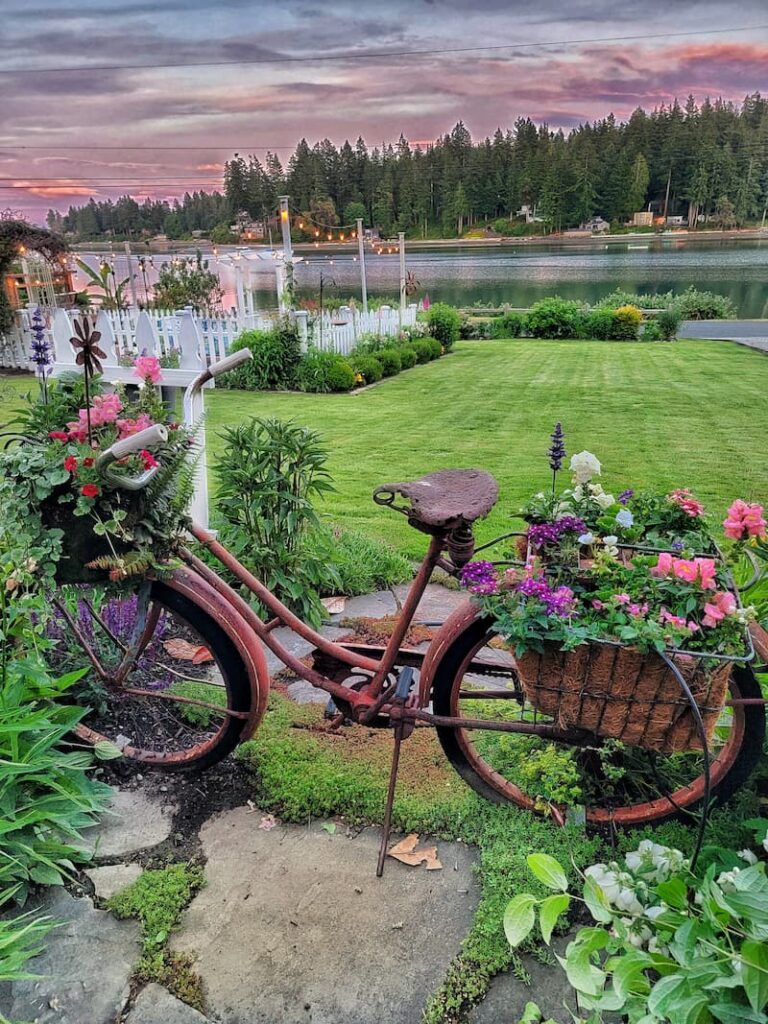
Here in NW Montana deer eat the lilacs. Young deer just learning will much and try about anything. But when older mostly leave the flowers you mentioned alone. This is a good list! Thanks
The deer did not eat my Black-Eyed Susan flowers. But, they did eat all of the green leaves at the bottom. And, the deer did eat all of my Coneflower…flowers. Almost all of the deer resistant flowers (and flowers in general) that I purchased, the deer feasted on like a buffet. Phlox, Coreopsis, Butterfly Bushes, Coral Belles. My 4 expensive Rose Bushes were annihilated! Not one rose left. My new flowerbed looks like a bunch of greenery. They must be really, really hungry. I need to find a non-toxic, safe and effective deer repellent.
I’m so sorry to hear this Brenda. Although there are flowers that are deer resistant, there is no way of ever being 100% accurate because if the deer get hungry enough, they will eat pretty much anything. They ate my roses this year too. I use Liquid Fence every couple of weeks and when I keep it up, my plants are safe. Here is my affiliate link for you to check it out. https://urlgeni.us/amazon/liquidfence2 It does smell awful when you first spray but it’s worth it and pet safe.
This is such a helpful post Kim! I’m sharing it with my followers today for my weekly round up because it will help so many people!
Thank you so much for sharing, Kristin.
I want a large garden but I really don’t want to deal with deer. Want a huge challenge. So glad you provided so many típs for me to learn.
As long as I’m diligent about spraying I don’t have problems. But the minute I forget my flowers are gone.
The deer around here are particularly brazen. They blithely chomp away on my flowers in the middle of the day and won’t run until I’m within 10 feet. Yesterday I watched as one calmly decimated my neighbor’s rose bush!
I’m noticing that too Sandra! It is a particularly bad year. And they are not scared of anything!
I had snapdragons in an unprotected area and as soon as they budded, the deer ate them. Then I moved them to a “safe” area, and the deer got in and ate them again. The greens on snapdragon may be deer-safe, but the buds are definitely not.
Woke up this morning and they’d eaten all the flower buds off my sulfur cosmos.